
Focusing on nutrition is absolutely essential to regaining and maintaining our comprehensive health, and is an imperative component to infuse into an effective healing program of any kind, including a copper balancing protocol. Nutrition IS health.
My dietary guidelines have evolved considerably throughout my journey, and I will outline them as follows. Keep in mind that these are only the personal elements that I have implemented into my own healing regimen, and your own bioindividuality must be considered when designing your own dietary picture. This is absolutely obligatory.
Many of the components here may appear very strict and limiting, however the key is to get creative, work on your cooking skills (I didn’t even really know how to cook before I became aware of my copper imbalance, and that has surely changed!) and realize that this is only temporary, until your levels and/or overall physiological balance has reached a more optimal state, at which point you will be able to loosen the reigns and integrate more and more foods over a period of time.
It is also important to point out that by my use of the term “diet”, I am not implying a one size fits all, black and white, imprisoning set of regulations to adhere to. The term “diet” is simply indicative of the particular type of eating plan one is following. As we all know, lack of success in adhering to a “diet” is exceptionally common, and a lot of this is due to the fact that these “diets” will often catalyze a feeling of being constricted and hence perpetuate a growing desire to veer off course. Yes, there are certain components of this eating plan that absolutely must be abided by if you are to successfully and lastingly heal, however there is always a bit of wiggle room within any type of specific eating plan, and always remember that you may tailor your “diet” to whatever will work the best for you, while simultaneously taking into consideration the most important components.
For example, within this eating plan, one of the most important components is to focus on zinc intake as opposed to copper intake. An additional important element would also be greatly reducing one’s sugar and simple carbohydrate intake. Does this mean that you may never indulge in your favorite treat? It sure doesn’t! It simply means that the majority of the time, adhering to the most important components of the eating plan will be in your best interests in order to experience the most noticeable and welcome results in your healing journey.
A lot of us have been conditioned to believe that “healthy eating” isn’t as tasty as less healthy eating, however I’ve discovered that this is far from true. The conventional food items that are so pervasive currently are thought to be the most flavorful, yet this “flavor” is derived from harmful and synthetic ingredients such as preservatives, additives, and chemicals. Food isn’t meant to be able to sit on a shelf for months at a time, it’s meant to be picked and eaten shortly after.
The key is to essentially come full-circle: getting back to the practices of our early ancestors, whom did not exhibit hardly any of the ubiquitous chronic illness that infiltrates our world today.
Nutrition and food have everything to do with how and what our body metabolize, and the old adage you are what you eat holds a tremendous amount of truth. Your transitions need not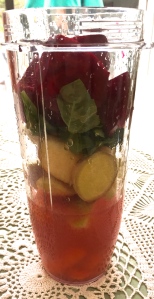 be as expeditious as an overnight overhaul, however, over time, it is absolutely possible to truly (and cost-effectively) change the way that you eat to ensure that your health is improved and subsequently maintained.
be as expeditious as an overnight overhaul, however, over time, it is absolutely possible to truly (and cost-effectively) change the way that you eat to ensure that your health is improved and subsequently maintained.
Furthermore, teaching your children healthy eating habits at an early age is a true gift, in that these will be absorbed within them so that they can grow into adulthood with a solid foundation that will catalyze true and lasting health.
*The photo above is of a low copper-friendly juice I make often, of which the primary ingredients are: fresh organic beets, carrots, basil leaves, ginger root, various greens, cucumber, celery, the juice of a whole lemon, and spring water. If you don’t have a juicer or a Nutri Ninja, a blender works just fine, you can drink it as a smoothie or strain the pulp to make it more of a juice…absolutely delicious and very healing!
Without further ado, here is an outline of the primary dietary shifts and implementations that I have made over the past several years, which is divided into the following relevant sections:
- High Copper Foods
- Overall Considerations
- General Dietary Focus
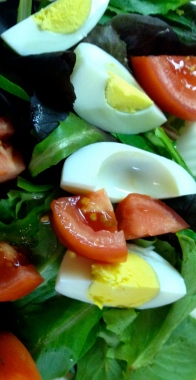
- Foods That I Focus On
- Fun Facts 🙂
- GUT HEALTH (very important to focus on)
- Cooking
- Convenience
- Food Safety
- Processed Foods/Lunch Meats
- Food Labels
- Water
- Eating Out
- The Social Aspect of Food
- Teas
- Snacking
- Fats
- Organic Eating
- Enjoying Food!
- Typical Day
- Miscellaneous Tips/Points
- Weekly Meal Plan
The following may seem very overwhelming at first. We learn as we go in life, so take your time to educate yourself as your nutritional awareness grows. It is a fascinating journey to say the least.
Furthermore, a brilliant update to the phrase “you are what you eat” states “you are what you digest and assimilate”. As is discussed below, including a powerful digestive aid (usually pancreatin, which includes amylase, protease, and lipase, then ox bile, and temporary hydrochloric acid supplementation) in your healing protocol is imperative. In addition, the use of a high potency probiotic is obligatory for many reasons including nutrient absorption and uptake. These dietary shifts will not provide nearly the level of intended healing if one is in a state of malabsorption. Gut health is of paramount significance for this and many other reasons, all discussed further below.
HIGH COPPER FOODS
I have stayed away from most of these foods for the most part, especially during “active” copper lowering. Once the body reaches further balance, one may slowly introduce some of these foods, remaining highly conscious of possible symptom emergence and overall well-being. If the liver, gut, and endocrine system are brought into a relatively optimal state of balance, the body is able to successfully bind, transport, and eliminate any excess copper as it was originally intended and designed to do, hence these foods being less of an issue the more one reaches systemic physiological balance. A lot of these foods are very nutrient dense, wonderfully healthful whole foods, so permanently excluding some of them is not optimal:
- Shellfish – also, most seafood is very high in mercury, another harmful and toxic heavy metal, so I avoid most seafood except for sardine and anchovy sourced Omega 3 supplements, and several types of wild caught fish (mainly wild caught Alaskan salmon), which have the lowest concentration.
- Beef liver and organ meats – extremely high copper content (I was not at all disappointed that I had to stay away from this! Haha!)…an interesting component here is that animals metabolize copper just as do humans, so their liver has a very high concentration, as does ours when copper reaches toxic levels and begins to initially accumulate. Liver is promoted as a very healing food and it is even made as a supplement as well, however it is important to make sure one does not have a copper imbalance before consuming it in any way.
- Nuts/seeds (including coconut) – while pumpkin seeds also have a fair amount of copper, they are also very high in zinc which counteracts the copper content, making them an “acceptable” seed to eat. It is important to find “sprouted” seeds, as this lowers the phytate and anti-nutrient content which can be detrimental to overall health. I’ve also tried my hand at soaking and sprouting nuts and seeds in the past, and while it was enlightening, it is quite an involved process, so my days of peeling individual seeds and dehydrating them over the course of a 48 hour period have ceased :). In addition, macadamia nuts have the lowest content of copper amongst all nuts, so it is acceptable to include them from time to time in your cooking and/or snacking…so delicious!
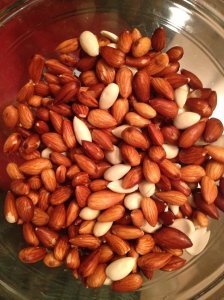 Soy products – these kind of boomed for a while in the natural health world as a protein substitution, however they can be very high in copper and also catalyze a rise in estrogen levels due to their phytoestrogen content (or exacerbate an underlying estrogen dominance imbalance), which one should be very mindful of when dealing with Copper Toxicity. Copper and estrogen go hand in hand – when one goes up, so does the other. Rising estrogen encourages the body to retain copper. Soy is also high in phytates/”anti-nutrients” which bind to imperative vitamins and minerals in the body and render them unable to be properly absorbed. Soy can also behave in the body as a goitrogen, which essentially means that it can exacerbate thyroid dysfunction. Fermented soy products such as natto and soy sauce are lower in these detrimental characteristics, however avoiding soy all together is my rule of thumb. It is also important to guarantee that supplements are soy free, as many supplement manufacturers use soy in their fabrication process, either as a source of the given nutrient or as a filler.
Soy products – these kind of boomed for a while in the natural health world as a protein substitution, however they can be very high in copper and also catalyze a rise in estrogen levels due to their phytoestrogen content (or exacerbate an underlying estrogen dominance imbalance), which one should be very mindful of when dealing with Copper Toxicity. Copper and estrogen go hand in hand – when one goes up, so does the other. Rising estrogen encourages the body to retain copper. Soy is also high in phytates/”anti-nutrients” which bind to imperative vitamins and minerals in the body and render them unable to be properly absorbed. Soy can also behave in the body as a goitrogen, which essentially means that it can exacerbate thyroid dysfunction. Fermented soy products such as natto and soy sauce are lower in these detrimental characteristics, however avoiding soy all together is my rule of thumb. It is also important to guarantee that supplements are soy free, as many supplement manufacturers use soy in their fabrication process, either as a source of the given nutrient or as a filler.- Mushrooms
- Avocado
- Peas
- Chocolate – this was a tough on for me at first! However after staying away from it for a while I basically lost interest, as I found with most high copper foods
- Beans – all types: garbanzo, kidney, black, soy, etc. (which are also quiet high in carbohydrates and should be limited greatly within this protocol)
- Whole grains/wheat – following an overall gluten-free diet is part of my regimen, which is relatively easy to do today as the detrimental impacts of gluten become much more well-known.
- Dried fruit – raisins, etc.
- Kale & Spinach – and most other leafy greens, however I still eat salads with arugula and lettuce, and eat plenty of collard greens, which are a highly nutrient dense, low-copper, “super food” of sorts, as well as mustard greens and beet tops which are lower in copper.
- Tempeh
- Yeast
- Asparagus – I ate asparagus maybe once or twice every week or so during active copper lowering as it is an excellent prebiotic, helpful for liver support, and many other healing components so I never totally excluded it.
- Spirulina – this came as a shock to me, as I was actually supplementing with it for a while, being that this blue-green algae is advocated for on a lot of heavy metal toxicity programs…come to find out, it has a notable amount of copper. I occasionally add Chlorella to my juices though, which is a low-copper, equally as nutrient dense, healing blue-green algae that I buy in bulk powder form…I actually feel a difference when I drink it. Most liquid chlorophyll supplements also contain quite a bit of copper.
- Some fish can be high in copper and mercury, especially “farm raised” fish so I always buy wild caught. Tilapia and trout are good options, as well as salmon, which is a little higher in copper, but a GREAT source of Omega 3’s and Vitamin D so I eat it occasionally. Any kind of fish is not consumed more than once or twice a week.
- An important note here is that almost every variety of food contains some level of copper, the key is simply to avoid those that have the highest concentration.
OVERALL CONSIDERATIONS FOR BALANCING:
*In general, this eating plan focuses on whole foods – emphasizing the inclusion of beneficial fats, protein, and fiber, while avoiding sugars and simple carbohydrates (white bread, white rice, sweets, soda, candy, and most conventional processed foods).
- This focus allows for the most nutrient-dense, healing diet that is the fundamental foundation for optimal healing. We want our eating plans to be rich in vitamins, minerals, phytochemicals, essential amino acids, essential fatty acids, and insoluble and soluble fiber – all of which provide the backbone for supporting the natural mechanisms of the body to heal itself and reach optimal balance.
- Why do basically all healthful eating plans dramatically reduce or completely eliminate sugar, including most fruits? The body, especially an imbalanced body, treats sugar like it does any other stressor. This stressor has an incredibly far-reaching, detrimental impact on your body’s ability to maintain homeostasis – or comprehensive balance and equilibrium. Sugar catalyzes spikes in blood glucose and can contribute to insulin resistance (as well as altering the calcium/magnesium ratio), feeds pathogenic organisms in the gut, catalyzes comprehensive endocrine imbalance, weight gain, and a whole host of other unwanted consequences. The state of our bodies and our environment is not what it was a century or two ago, hence our inability to simply convert sugar to energy as it was originally intended to do. Sugar is basically a stressor and a toxin today, and it is tremendously important to remain aware of this when making food choices.
- Rule of thumb: When it comes to any food item that is not a whole food (i.e. fresh produce, fresh meat, fresh seasonings, etc.) assume that it contains sugar. Read labels religiously – most conventional food items that are packaged contain sugar, even if one would not assume so. Bottled sauces and dressings, for example, contain loads of sugar. Always make sure to check. I am typically fine if something contains a few grams of sugar per item/serving, yet anything above about 6-9 grams per serving is too much, and 0 is even better.
- Your body is metabolically equipped to burn healthy fats as its primary source of fuel. Eating a diet high in sugars and simple carbohydrates will stunt this ability, however. Leaving behind the notion of counting calories and adopting a diet that revolves around beneficial fats, protein, and fiber is by far the most advantageous and health promoting, regardless of the circumstances of one’s illness. Many of the conventional “food pyramid” guidelines are proven highly disadvantageous for our health, which is certainly shown in the fact that over half of all Americans have a chronic illness of some kind.
*First and foremost, the most important first step on a copper balancing protocol is to remove the sources of copper that are contributing to the imbalance. These include copper in both organic and inorganic forms: supplements, tap/well water supplies, copper cookware, the copper IUD, other conventional forms of birth control such as the pill and the Mirena IUD, high copper foods as listed above, and/or environmental exposures.
*Ceruloplasmin production is an extremely important component of a copper balancing protocol, as this is the body’s primary copper binding protein. Increasing the production of ceruloplasmin will render excess copper less toxic and facilitate its removal, plus it will render unbound free copper bioavailable, which will allow the body to actually utilize this mineral as it was physiologically intended. Pre-formed Vitamin A in the form of animal proteins such as eggs and meats are very important for this purpose, plus the use of whole food Vitamin C supplements. Also, liver and adrenal support, supplemental zinc picolinate, and the judicious use of sulfur amino acids and compounds are helpful (many with CT are sensitive to sulfur, including myself, so this must be kept in mind).
*As stated, sulfur sensitivity is something to be aware of with Copper Toxicity. This is a complex subject and can get tricky with this imbalance, seeing as sulfur is such an important component for liver detoxification and ceruloplasmin production. CT often causes a deficiency in the mineral molybdenum, which is vital for optimal function of the trans-sulfuration pathway. Also, the CBS gene variant can cause a more severe sulfur sensitivity, which I have. While this is a cause for more heightened awareness, it is not a cause for worry.
Generally, if you have a sulfur sensitivity you will notice that you get more fatigued or have other various reactions when eating foods higher in sulfur such as eggs, garlic, and broccoli. You may also respond poorly to supplements high in sulfur as well, such as N-acetyl-cysteine, taurine, alpha lipoic acid, spanish black radish, or glutathione. You’ll notice that all of those aforementioned supplements are traditionally recommended and excellent for liver detox! In order to work around this sensitivity, supplementing with molybdenum (molybdenum is a copper antagonist as well) is helpful, and keeping sulfur foods in the diet to a limited or moderate degree.
I do not supplement with high sulfur amino acids or herbs, because these dramatically increase fatigue and can encourage the abnormal expression of the CBS SNP, but I do keep higher sulfur foods in my diet to a moderate degree as to reap their tremendous benefits when it comes to liver detoxification. As can be seen regrading sulfur, bioindividuality really couldn’t be more important, and the key is to know yourself and your unique biochemistry (and genetics!), and then formulate an eating plan that will suit your unique make-up the most appropriately.
*As mentioned above, reducing all foods that are high in phytates and anti-nutrients is very important to optimize nutrient absorption. These foods include nuts/seeds, soy, grains, and beans. Phytates/phytic acids are compounds in these foods that bind to imperative nutrients such as zinc, iron, magnesium, and calcium and disallow the body from utilizing them properly. Human beings are also not equipped with the enzyme needed to properly digest these foods, phytase, which often causes notable digestive upset. Preparing foods that are high in phytates by cooking, soaking, and/or sprouting does indeed lower the phytate content some, so if one is to consume them, it is best to properly prepare them first. As usual, it is all about balance, and phytate-rich foods also comprise a plethora of nutritional benefits, hence consumption may remain at a moderate to minimum amount, being mindful of preparation.
*Nightshade vegetables, including tomatoes, potatoes, eggplant, and peppers are generally avoided due to their high lectin content. Beans (including peanuts), soy, and grains (including corn) are also quite high. Lectins are a form of protein that can irritate the gut lining and cause leaky gut (which has an adverse and harmful impact on our overall health). As discussed above, they are also a form of “anti-nutrient” that can bind to vital nutrients in the body and disallow them from being absorbed. Many different foods contain lectins, so it is impossible to avoid all of them, but being mindful and keeping consumption to a minimum is optimal.
*It is also key on a copper balancing protocol to avoid or dramatically decrease exposure to xenoestrogens and phytoestrogens, both of which can worsen an already existent state of estrogen dominance (copper and estrogen rise and fall concurrently, and rising estrogen will encourage copper retention). Xenoestrogens are endocrine disrupting environmental/foreign chemicals that mimic the natural estrogen hormone in the body. These can be found in conventional household cleaners, plastics, food preservatives and dyes (specifically Red No. 3), industrial waste, the birth control pill, hormone replacement therapies, some prescription drugs, nail polish, chlorinated water, dryer sheets, and more. Some of the main phytoestrogen sources are soy, vegetable oils, licorice, red clover, hops, dong qu, black cohosh, ginseng, and yellow dock. In order to continue to maintain estrogen balance and ensure optimal elimination of excess estrogen, focusing on liver support (and hence bile flow), methylation support, and gut balance are all key. The inclusion of substantial insoluble and soluble fiber to keep excess hormones moving through the GI tract is also helpful.
→It is very important to use mostly glass containers and to particularly avoid heating anything in plastic as to reduce exposure to xenoestrogens.
*Allergies, including food sensitivities/intolerances and allergies, are common with many physiological imbalances today. Copper Toxicity can contribute to this symptom by altering the body’s proper allergy response, causing histamine intolerance/mast cell activation, as well as its role it catalyzing gut imbalance and leaky gut, all of which contribute to and serve as the core underlying cause of food allergies and sensitivities. There is a key distinction between a food allergy and a food sensitivity – a food allergy is present when any amount of the food item is consumed, and reactions occur right away. This type of reaction is referred to as a “type I” reaction, and involves the immune release of IgE antibodies, which cause allergic symptoms (sometimes very severe).
A food sensitivity or intolerance involves a more delayed response with the immune release of IgG antibodies, which create inflammatory symptoms. In general, one can tell if they are sensitive to a certain food if it causes noticeable symptoms such as increased digestive upset, heart palpitations/increased heart rate, skin rash/itching, sweating, increased fatigue, shortness of breath, anxiety, depression, brain fog, acne, stubborn weight gain, swelling, water retention and various other symptoms shortly after the consumption of the food. This can be tricky because sometimes reactions can manifest a while after the consumption of the food (a day or two sometimes), so keeping a food journal is very helpful. What is often referred to as an “elimination diet” can help, where one eliminates all possible food triggers/allergens listed below, and gradually reintroduces foods one by one to see which ones are causing symptoms, if any.
Avoiding foods that one is sensitive to while healing the gut and balancing copper levels allows for the underlying contributor to the sensitivity to be treated, and then the problem foods can be reintroduced slowly over time. Continuing to eat foods that one is sensitive to while trying to actively heal and balance the body can contribute to a chronic inflammatory state that is not optimal nor conducive to healing, so it is important to first identify and then avoid these for a period of time. Some common food allergens are corn, nuts, peanuts (technically a legume), yeast, soy, wheat (gluten), dairy (casein), mold/fungus (such as aspergillus), strawberries, eggs, and some others. Dietary supplements often contain these ingredients, so it is also important to check all labels, and if unclear, contact the supplement company directly. Avoid all supplements that contain sensitive ingredients.
- As is discussed further in the gut health section below, a diet that is completely gluten-free is imperative. Most people are sensitive to this wheat protein, even if they do not experience digestive upset symptoms. Gluten catalyzes adverse impacts to our health in endless ways, most importantly by irritating the gut lining and encouraging the development of a leaky gut. This then impairs immune function and greatly handicaps one’s ability to properly detoxify.
- As is discussed above and throughout this page, CT can catalyze histamine intolerance/sensitivity/mast cell activation. Avoiding foods that are higher in histamine and/or trigger histamine release (such as tomatoes, fermented foods, aged cheeses, alcohol, bone broth, cured meats, vinegar, soy, nuts, chocolate – many of which are also high in copper) is usually advised, at least for a period of time. Supplementing with the DAO enzyme, black cumin seed oil, perilla extract, quercetin, nettle, whole food Vitamin C, or other histamine degrading and mast cell stabilizing healing agents can also be helpful.
*As I discuss a bit further below, it is all about balance. When making food choices, it is imperative and liberating to consider the balancing factors of any given food item. Depending on your unique bioindividuality, certain foods will be more fitting than others. Per a copper balancing eating plan, some foods may be higher in copper, but also high in copper balancing nutrients and minerals, which renders them acceptable in moderation. Pumpkin seeds are a good example in being higher in copper yes, but also in zinc, which creates balance. Foods high in the main copper antagonists such as manganese, Vitamin C, molybdenum, Vitamin B6, and of course zinc, are welcome in moderation, even if they contain notable levels of copper. Remain cognizant of keeping yourself open and do not avoid ALL foods high in copper, as some copper is needed, and as with everything, it is all always about balance. Take a peaceful, considerate approach as you learn more about copper imbalance and nutrition in general.
*It is best to eat every 2 to 3 hours as to maintain balanced blood sugar levels – this is imperative to maintaining systemic bodily homeostasis, or balance. What is more, anxiety is already a common symptom in both those with CT and those actively eliminating copper, and when one’s blood sugar dips too low, the adrenal glands will release more cortisol to signal the liver to release stored sugar (glycogen). This causes feelings of anxiety and sometimes panic, which is obviously best left out of the equation! This is another reason this eating plan encourages the use of complex carbohydrates, protein, and fat, because these help to maintain balanced blood sugar. “Low glycemic” foods such as these do not spike rapid rises in blood sugar and hence promote systemic balance, strengthen adrenal and overall endocrine function, and promote consistent energy levels.
*Keeping a food journal can be a really helpful way to stay organized and keep up with your various shifts in diet, how well you do or don’t tolerate various food items, record symptoms, etc. You can also refer back to your food journal to gauge progress with food tolerances.
*I do not include a literal explanation of my supplement regimen as I do not want to give the idea that one size will fit all. Your supplement protocol will be custom-tailored just for you, as we are all unique biochemically, and our healing protocols must honor this. As a general rule however, I always check to make sure all supplements are yeast, soy, and grain free.
I also will only use supplements from reputable companies (most of which I have communicated with directly) such as Standard Process/Medi Herb, Seeking Health, Pure Encapsulations, Thorne Research, Gaia Herbs, ProThera, and several others such as some Now and Nature’s Way products. Eventually I plan to found my very own supplement line…however until then, these lines are my go-to :). Lines such as Standard Process are often only available through your natural healthcare practitioner, yet some can be found online, mostly on Amazon (price check for these listings, as I’ve noticed Standard Process supplements are excessively high online when they are much more reasonably priced from the practitioner).
- Our diet is the fundamental backbone for optimal healing, however due to the greatly depleted nutrient supply of today’s soil, nutritional supplements are almost always needed to bring the body back to balance and replenish the many nutrient deficiencies that result from Copper Toxicity.
- One’s unique supplement program is designed around their Hair Tissue Mineral Analysis results and other various important test results.
- Some of the key supplements to consider in a Copper Toxicity healing protocol, to be used judiciously and with full consideration of bioindividuality as determined via testing, personal health history, and lived experience are outlined below.
- General Rule of Thumb with all supplements:
⇒LOW and SLOW – LESS is MORE. Especially regarding copper antagonists, such as zinc. One must always start with low doses and gradually increase very slowly, because mobilizing copper out of tissue storage too quickly can very much worsen one’s condition and exacerbate symptoms dramatically.
⇒Avoid formulas: Formulas seem like a convenient way to add in a variety of vitamins, minerals, nutrients, and herbs all-in-one, however rarely is a formula suitable for everyone. The #1 most important consideration for healing is the consideration of bioindividuality – meaning each individual person’s protocol will look different (different doses, different individual healing agents, different reasoning and consideration based on that unique individual’s circumstances, causal chains, lifestyle, environment, and history).
⇒Again, making sure all supplements are free of gluten, yeast, soy, and sugar is optimal: These ingredients contribute to a chronic inflammatory state that is counterintuitive to healing. If unclear, contact the supplement company directly.
⇒Theory is much different than clinical reality and lived experience: This goes for all things medicine and healthcare. There are many factors to consider when developing a personal supplement regimen that is custom-tailored specifically for you and only you (and everything having to do with your healing protocol, for that matter). What is appropriate for one person may not be for the next, it is entirely up to your unique bioindividual factors. Furthermore, there are many supplements and healing agents that should “work” theoretically, regarding basic physiology and general understandings of medicine, however your own unique physiology is what is most important. The way you metabolize a specific supplement can be completely different than what one would predict, so maintaining a continual open mind and willingness to learn are very important. There will be some trial and error involved. Remain in touch with yourself, your body, and your individual responses. Introducing supplements one at a time is an often valuable method to decipher which agents will suite your needs best.
⇒While natural treatments are certainly much safer, all supplements and therapies have the potential to cause adverse reactions: This is why starting each supplement or therapy one at a time is helpful. “Die off” or “Herxheimer reactions”, which are essentially the worsening of one’s condition while pathogens, toxins, and excesses are cleared from the body, are common. Sometimes it can be hard to decipher whether or not you are experiencing a healing reaction or an actual side effect of a supplement. Stay in touch with your body and keep your healing journal handy. Document the whole process so that you can associate shifts in your symptoms to the addition or exclusion of certain supplements.
- Zinc – picolinate is often the best absorbed – the most copper antagonistic mineral. Low doses, especially at the beginning of treatment, is essential!
- Vitamin C – always whole food vs. ascorbic acid – copper antagonistic, adrenal support and ceruloplasmin production support.
- Magnesium – deficiency is not only common amongst CT sufferers, but the general population as well. Calcium supplementation is determined per one’s unique HTMA results.
- Molybdenum – sulfur pathway support, healing reaction support, and copper antagonistic.
- Manganese – copper antagonistic, often low with CT, adrenal support.
- Vitamin B6 – copper antagonistic: I personally stopped taking this after realizing it was exacerbating the CBS gene variant that I have that is expressive. It actually made my hair loss worse for a while. This is a good example of every-body being different and bioindividuality being of the utmost importance.
- Potassium – often severely depleted with CT, due to stage 3 adrenal exhaustion
- Omega 3 fatty acids – tremendously anti-inflammatory, hormone balance supporting, and gut healing: fish oil is usually the best source – only those derived from sardines and/or anchovies, which have the lowest amount of mercury. Sometimes, for those susceptible, high-dose fish oil can cause anxiety, simply something to be mindful of. As long as I keep my doses moderate, I’ve never had an issue. Also, most brands contain soy, yet there are a few that are made soy-free.
- Adrenal support – avoiding stimulating herbs such as rhodiola, licorice, and ginseng if occupying the stage 3 exhaustion phase of stress and focusing on gentle supportive agents such as pantothine (active Vitamin B5), adrenal gladulars (cortex specifically), and adaptogenic herbs such as ashwagandha and holy basil, if tolerated (ashwagandha causes drowsiness for me so I take it before bed). Himalayan shilajit is also an excellent adaptogen, as well as schisandra berry. Vitamin C (whole food), zinc, and manganese are also nurturing to the adrenal glands, as well as Vitamin A and Vitamin E. Supplementation is determined via your bioindividual needs and tolerances (Vitamin E supplements are often derived from soy which must be avoided).
- Thyroid support – thyroid gladulars, adaptogens listed above, guggul, and/or iodine (often in the form of kelp, if tolerated) are often the most helpful. Refrain from taking too much iodine or kelp, this can induce hypothyroidism in and of itself in sensitive individuals. Iodine and/or kelp supplementation is also not recommended for those with an autoimmune thyroid condition such as Hashimoto’s Thyroiditis. The thyroid and adrenal glands are intimately connected, they behave in the body concurrently and they are treated concurrently within one’s healing protocol.
- Liver, Glutathione, and Methylation Pathway support – yet again the specific agents used to support these extremely significant physiological areas are all unique to you and only you as there are many herbs, supplements, and healing agents to consider. Some examples would be dandelion, artichoke (I use it in powder form as well as cooking it fresh), parsley (fresh and supplemental), and rosemary for lower sulfur liver/glutathione support, for those whom are sulfur sensitive such as myself. High sulfur liver supports include milk thistle, R-lipoic acid, taurine, N-acetyl-cysteine, spanish black radish, liposomal glutathione, and others. Castor oil packs and liver/gallbladder flushes are also excellent for supporting liver function and detoxification capacity overall. Furthermore, judicious, cautious, and bioindividual use of hydroxocobalamin B12 (tolerated better by those sensitive to methyl donors, such as myself) or methylcobalamin B12, methylfolate B9, and various other nutrigenomic supports for methylation are helpful. This involves careful experimentation and consideration as methylation can be a complex area, and over supplementation can compound one’s imbalances. Among many other huge physiological areas, methylation is part of the phase 2 liver detoxification pathway, which is the primary elimination pathway of most toxins, heavy metals including excess copper, and excess hormones including excess estrogen.
- Phospholipid Complex – derived from a non-soy source such as sunflower. Phospholipids, including phosphatidylcholine, phosphatidylethanolamine, and phosphatidylinositol are tremendously important for cellular health and function as well as playing a large role in brain health, liver function, mitochondrial function, and overall detoxification capacity. Over time, taking phospholipids allows for the cells to be cleansed and rebuilt, making this a highly relevant inclusion to a CT healing protocol, and any other protocol designed to detoxify and calm a systemic inflammatory state.
- Binders can be used to facilitate the removal of heavy metals, endotoxins, biotoxins and environmental toxins (such as mycotoxins from mold), and other impurities from the body. These include activated charcoal, bentonite clay (do not use metal utensils when mixing), modified citrus pectin, silica, glucomannan, and some others. Most binders must always be taken away from food and other supplements because they can bind to vital nutrients also.
- Estrogen metabolism support/progesterone production support – DIM, Myomin, careful use of Chaste Tree/Vitex.
- A superior quality digestive aid – which includes pancreatin including lipase, amylase, protease, and ox bile – additional helpful enzyme inclusions would be alpha-galactosidase, phytase, and cellulase.
- Betaine hydrochloride – HCL/stomach acid is very low in most with CT, hence a common need to supplement for at least 4 to 5 months or longer during active healing. I refer to HCL as the “kick-starter” as it is imperative for jumpstarting the digestive process, signaling bile flow (which is paramount for copper detox), nutrient absorption, defending against gut pathogens, protein synthesis, and many other highly significant physiological processes. There are many direct and indirect symptoms of low stomach acid including heartburn, bloating, gas, fatigue, brain fog, nutrient deficiencies and resulting imbalances (such as iron deficiency anemia or megaloblastic anemia). The aim is to reach the point where your body is producing its own stomach acid, or to use more mild means such as drinking apple cider vinegar to stimulate endogenous production. However, when the body is under any kind of stress (physical or emotional), which includes chronic illness/imbalance, endogenous HCL production is often greatly depleted, rendering it very hard to optimize mineral and nutrient levels, hence the importance of supplementing. Typically, HCL supplements are made in conjunction with pepsin, which is an enzyme produced in the stomach that is responsible for protein breakdown. Porcine derived pepsin is usually better tolerated than fungal derived pepsin in supplements.
- Gut healing agents such as probiotics (the best probiotics are listed below in Gut Health), gut lining support, and following a comprehensive “4R” gut healing regimen, all bioindividually determined. Gut healing is imperative to heal from most ailments, illnesses, and imbalances. The specific terminology for the “4R” gut healing approach differs slightly depending on the practitioner:
→Remove: problem foods from the diet such as sugar, simple carbohydrates, most grains, gluten, soy, and dairy, which all catalyze gut imbalance and leaky gut.
→Replace: digestive capacity with digestive enzymes and ox bile (and often HCL or drinking Apple Cider Vinegar to stimulate endogenous stomach acid production).
→Repair: the gut lining with various nutrients discussed below in Gut Health.
→Reinoculate: the microbiome with a wide diversity of beneficial flora that are imperative for optimal health and proper metabolic function. These include multi-strain probiotics, fermented foods, and prebiotic fibers/vegetables (when the individual can tolerate them, at first these foods can be problematic when gut balance is severely compromised – see FODMAP discussion below).
*The identification and elimination of gut pathogens and imbalances such as Small Intestinal Bacterial Overgrowth (SIBO), bacterial infections (such as H. Pylori), fungal overgrowth (often Candida Albicans), and intestinal parasites (many species and very common) is also of great importance. Specific herbal remedies, oxygen therapies, coffee and other enemas, and various other forms of treatment are used depending on one’s unique circumstances. Obtaining a Comprehensive Stool Analysis with PCR technology is of great help (Genova Labs has a great one), although there are gut pathogens that are not revealed on any current testing methodology.
16. Additional gut/stomach lining support such as aloe vera juice and/or supplements, as to further support the all-too-important GI tract. Aloe is an age old healing agent that greatly facilitates deep healing and is soothing to the often irritated digestive systems of those with CT. Aloe can help soothe heartburn and also help with increasing nutrient absorption.
17. Various symptom based aids: Natural/functional medicine is all about identifying one’s core underlying causes and treating these causes as to truly heal you and achieve complete balance, however, throughout the healing process there are some symptoms that can prove to be exceptionally bothersome and can be supported via various natural healing agents. For example, anxiety (and sometimes panic) are common when one has CT as well as when they are eliminating excess copper, so using herbs such as passion flower are very helpful. Valerian root is another helpful herb that can help with insomnia, as well as calm (only taken at night before bed, as it does induce sleep). Another example would be if one is experiencing symptoms due to high histamine/mast cell activation, supplementing with the DAO enzyme, black cumin seed oil, perilla extract, and/or quercetin would be helpful to ease these symptoms while the underlying cause (CT, other heavy metal toxicity, gut imbalance, etc.) is being treated as well. Discussing how to best manage your symptoms with your healthcare practitioner is optimal, as to determine what will suit your needs the best.
*An overall anti-inflammatory focus is key for most healing protocols, as chronic inflammation is behind a great deal of one’s presenting symptoms.
*IMPORTANT NOTE: There are a variety of different healing components to each respective food item – some of these can help a given physiological imbalance and some can be considered harmful, depending on the malady or condition. As opposed to eliminating any and everything that may be high in copper or high in histamine, I remain conscious of whether the healing components of the given food item outweigh any potential detriments in accordance to my particular bioindividual needs. For example, lemon may be considered to be higher histamine, but is an excellent liver cleanser, which is optimal for maintaining copper balance. Therefore, I do not exclude lemon juice from my diet. We are all unique biochemically, therefore our diets will vary from person to person. My rules of thumb are:
- FOLLOW MY INTUITION
- LISTEN TO MY BODY
- RECOGNIZE MY OWN BIOINDIVIDUALITY WHEN MAKING DIETARY CHOICES
*Healing Journey Essentials is another resource for information on a wide variety of integrative health and healing topics that may be of benefit to you on your healing journey :).
FOODS THAT I FOCUS ON:
〉I focus on most foods that are inherently high in zinc (our biggest ally against Copper Toxicity as it is the most copper antagonistic mineral – they have an inverse relationship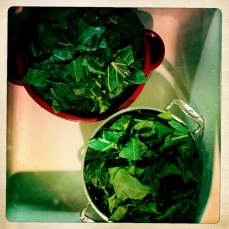 to one another) such as animal proteins:
to one another) such as animal proteins:
- organic cage-free eggs
- organic grass-fed beef
- fresh organic chicken
- fresh organic turkey
Eating a primarily vegetarian diet is highly discouraged with CT, as animal proteins are our best and most bioavailable source of zinc (as well as being necessary for ceruloplasmin production, as described above).
- All beef is strictly organic grass fed (which is far more nutrient dense and much safer than grain fed, which often contains GMOs, pesticides, detrimental herbicides such as glyphosate, mold and mycotoxins, and other toxic elements), antibiotic, and hormone free. I also stick with organic, cage-free eggs.
- If a food label states “USDA Organic” or “Certified Organic” this means that it does not contain nor has it been fed GMO containing ingredients. It is also free of synthetic fertilizers, pesticides, antibiotics, and added hormones. These items are typically more expensive, however it is certainly worth it if at all possible. Check out different stores, because there are more stores offering great deals on organic ground beef ($4.99 USD/pound at some locations)
- As is discussed further below, organic is best for the most part. In circumstances like eating out, it is impossible to know for sure. Or the cost may interfere, so most of the time, if at all possible, organic is preferred.
- When it comes to meat, if you can not purchase organic, hormone and antibiotic-free would be the next-best option. What is key to remember:
The number one priority is that the diet is comprised of mainly whole foods.
- As a general rule, I cook most of my protein fresh. However, on occasion or when I am traveling, I will use organic, antibiotic/hormone free ready-to-heat protein products that are available such as chicken & turkey sausage, meatballs, etc. These can come in handy occasionally. Be sure to check labels carefully to make sure that they are indeed organic and contain no antibiotics or hormones. Also, especially with sausage, make sure that there are not additives or preservatives. If the item is labeled organic, then it will be free of these harmful additives. Some of these products will sneak in gluten as well, or added sugars which I always avoid if at all possible. Those that contain just seasonings and meat are the only ones I gear toward. These are great to throw in a pan with some olive oil and add to a salad or vegetable dish on evenings that you don’t feel like cooking a full-blown meal :). These types of meats can indeed be higher in histamine, and are much less nutritious than fresh meats, so they are not frequently eaten, but are great for only occasional use from time to time.
- Some wild game and/or fresh, grass-fed lamb is acceptable as well.
- Pork is avoided because it is not very nutrient dense and it is much more likely to house parasite eggs. Seeing as most with CT are much more susceptible to infections, including parasitic infections, this is important to be cautious of.
- As mentioned above, some wild caught fish is included, such as wild caught Alaskan salmon, however, unfortunately, most fish and seafood today are high in mercury, one of the most toxic and damaging heavy metals. Making sure fish is wild caught is huge. Anchovies and sardines are also much lower in mercury, if one has a taste for them. Fish is not consumed more than once or twice a week.
It is all about balance.
- While protein is indeed encouraged, it is important to keep intake to a moderate level and take periodic breaks from daily consumption as to not exacerbate kidney function (our kidneys are responsible for the elimination of waste produced by protein metabolism) and other metabolic pathways that can become taxed when excessive protein is consumed. A good general rule of thumb is to not exceed 2 meals per day that include animal protein. This can and does vary, as you will see below in my meal plan examples. My typical MO is to take breaks – some days not consumed much animal protein at all and others almost every meal. As with all healing eating plans, one’s unique bioindividual needs are the first priority, so in this case, balancing copper is the focus, rendering animal protein a much needed essential to include.
〉Lots and lots of vegetables – as described below. Most vegetables are cooked or lightly steamed, this is important, as it makes them easier to digest. With Copper Toxicity, and most chronic illness, digestive capacity is impaired, so in order to acquire and assimilate nutrients the most effectively, cooking most vegetables is elemental (except for sporadic green salads and sliced cucumbers which are of course fresh and raw).
〉Low FODMAP vegetables: the avoidance of high FODMAP vegetables is only temporary, and they are reintroduced as gut balance is regained. I realized FODMAPS were a problem for me after following many gut healing regimens that stressed the inclusion of vegetables such as cabbage, garlic, onion, and cruciferous vegetables (broccoli, cauliflower, brussels sprouts, etc.). My digestive symptoms were only getting worse until I realized that these foods were exacerbating the problem. Gut imbalance/dysbiosis (which in general, refers to an imbalance of “good” and “bad” bacteria in the gut, poor digestive function, potential gut pathogen infection, and other gut health aggravations) is essentially pervasive with CT, so FODMAPS can be an issue for those with this mineral imbalance. FODMAP stands for Fermentable Oligo – Di – Monosaccharides and Polyols, which are a form of carbohydrate (including sugars and fiber) found in a variety of foods such as cruciferous vegetables, garlic, onion, beans, and many others.
When digestive function is compromised, these forms of carbohydrates can move through the small intestine undigested. Once they reach the large intestine, gut bacteria proceed to ferment them (which is usually a welcome and needed physiological function of gut bacteria when foods are properly digested), which produces gas. This fermentation can also cause other symptoms such as abdominal pain, constipation, bloating, nausea, and others. Additionally, FODMAPs can draw water into the intestines and potentially cause diarrhea. It was most difficult to avoid garlic and onion while eating out, but for the most part a temporary avoidance of these vegetables is helpful to facilitate healing and lesson bothersome digestive/gut imbalance symptoms.
- After a period of exclusion, I have successfully added back higher FODMAP foods such as asparagus, garlic, onion, cabbage, and brussels sprouts. I’ve tolerated them well, and will be adding in more eventually. Initial exclusion is done as to expedite healing, yet it is key to remember that our goal is to enjoy a balanced, nutrient-rich diet that includes a wide variety of food items. Especially in the case of FODMAPs, since all of them can be considered excellent “prebiotics” which are the foods and fibers that the good bacteria in our gut (which are oh so important to nurture) thrive on. Some people find that eliminating FODMAPS for a couple weeks and slowly reintroducing them has helped greatly – the timing is all up to your individual and unique healing journey.
- Cruciferous vegetables, in their raw form, are also considered goitrogens, which can exacerbate low thyroid function, something that essentially everyone with a copper imbalance exhibits. These include vegetables such as broccoli, cauliflower, cabbage, radishes, and brussels sprouts. Cooking these vegetables essentially eliminates the potentially harmful goitrogenic compounds, in which case they can be eaten without concern. Soy is also considered a goitrogen – as is made clear here, it is essential to avoid soy all together, as it comprises a myriad of characteristics that aggravate the many physiological dysfunctions caused by Copper Toxicity.
〉Vegetables include:
- Green beans – An excellent source of fiber and vitamin C, as well as iron, magnesium, folate, and vitamins K and B6. I make my green bean dishes more enjoyable with coconut oil or butter and plenty of sea salt and fresh ground black pepper. Also, searing them in a pan so that they get a little crisp on the outside has also been a nice touch. Green beans are unique regarding phytic acid and lectin content because they are mostly made up of the pod, not the bean. This makes the phytic acid and lectin content very low.
- Greens – A great source of antioxidants, fiber, folate, iron, magnesium, potassium, and calcium. As stated above, spinach and kale are mostly avoided as they are quite high in copper, yet I include lettuce, arugula, mustard greens, dandelion, and collard greens primarily. After about 2 years of only cooked vegetables, I sporadically integrated salads into my diet in my attempt to start including a little more raw foods, as mentioned below. I use the salad dressing recipe that is included on my “Recipe” page (linked below) as well as an organic roasted red pepper dressing (“Annie’s” brand) that I recently found, it is delicious and I’m excited to have found it because it does not include hardly any of the pervasive sugars and distilled vinegars that are in so many other salad dressings. While peppers are high in lectins, I avoid most other lectin-rich foods so one or two items is acceptable. After 8 or 9 months, I also incorporated steamed spinach here and there with no problems.
- Snow peas/sugar snap peas – Great source of vitamin C, vitamin K, manganese, iron, and fiber. Super easy and delicious meal addition or snack…I usually just boil them and add a little coconut oil and sea salt.
- Daikon radishes – Excellent source of phosphorus, vitamin C, potassium, and folate. Daikon radishes are also high in fiber and aid in liver and kidney health. These are good roasted with a little organic olive oil and sea salt.
- BEETS! These are extremely helpful for improving bile flow, which is the main elimination pathway of copper (and estrogen), as well as naturally raising iron levels/oxygen flow as most with CT will have impaired iron metabolism. Beets are also an excellent natural source of betaine (TMG), which is very helpful in improving methylation processes, a series of biochemical processes that are responsible for many vital physiological necessities, one of which is phase 2 liver detoxification. Improving methylation processes is of paramount importance for this protocol. Foods high in vitamins B6, B12, and folate are also key for this purpose, hence the emphasis of animal proteins and nutrient dense greens and vegetables. I am simply in LOVE with beets: not only are they absolutely delicious, yet they really are miraculous in their healing capabilities! 🙂 It’s also great to cook the beet tops as well, if they survive the trip home from the grocery store.
- A brilliant discovery that I made as well is that there are several varieties of
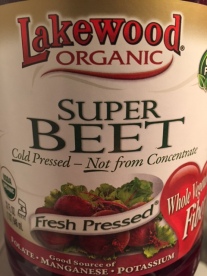 bottled cold-pressed, organic beet juice available – I was SO EXCITED to find this originally!! The two I use are Biotta and Lakewood Organic (pictured to the right). It’s important to start slow, as the healing powers of beets are very intense and drinking too much at one time has the potential to catalyze a “healing reaction” of sorts, as one’s body is attempting to expel toxins more expeditiously than the elimination organs are capable of successfully doing so.
bottled cold-pressed, organic beet juice available – I was SO EXCITED to find this originally!! The two I use are Biotta and Lakewood Organic (pictured to the right). It’s important to start slow, as the healing powers of beets are very intense and drinking too much at one time has the potential to catalyze a “healing reaction” of sorts, as one’s body is attempting to expel toxins more expeditiously than the elimination organs are capable of successfully doing so. - Yes, beets are rather high in sugar, however their myriad of exceptionally wonderful healing properties far outweighs the sugar content – and while avoiding sugar of all kinds in every other area, this small inclusion is not a problem.
- A brilliant discovery that I made as well is that there are several varieties of
- Carrots – I eat carrots and drink carrot juice often, as they are also helpful for improving bile flow, supporting overall liver function, providing beta carotene (a precursor to Vitamin A), among many other advantageous healing components.
- Beets and carrots are also excellent sources of potassium and fiber. Potassium levels are often very low in those with CT, due to prolonged adrenal insufficiency/fatigue. Loading up on fiber is also very important as to keep the intestines cleansed and detoxification pathways moving.
- Artichokes – Have many healing properties which include serving as an antioxidant, source of dietary fiber, aiding overall digestive function, and cleansing the liver, among others. One whole artichoke has a small amount of copper, however, as stated above, all food has some degree of copper, it is simply important to focus more on those that have a lesser amount.
- Rutabaga – While a lot of root vegetables like potatoes should be avoided, rutabaga is an exception in the fact in
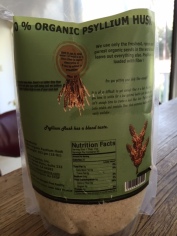 that it is loaded with Vitamin C, and is actually an anti-fungal, which is helpful in the sense that copper can exacerbate systemic fungal/yeast infections such as Candida Albicans Here is my Rutabaga Mash recipe, second one down from the top.
that it is loaded with Vitamin C, and is actually an anti-fungal, which is helpful in the sense that copper can exacerbate systemic fungal/yeast infections such as Candida Albicans Here is my Rutabaga Mash recipe, second one down from the top. - Onions (red, white, yellow, shallots, green, sweet), leeks, garlic, brussels sprouts, asparagus, cabbage, broccoli, cauliflower, and other higher FODMAP vegetables are welcomed in this eating plan if one tolerates FODMAPs well, and/or after a period of exclusion so the gut has time to obtain further bacterial balance. Introduce these foods slowly and individually to discern if you tolerate them yet or not. They are all excellent prebiotics, sources of fiber, liver supporting, and full of many advantageous vitamins, minerals, and nutrients.
- Zucchini/yellow squash/butternut squash – The soup pictured to the right was a delightful find, seeing as a few pre-prepared foods fit the bill! It is absolutely
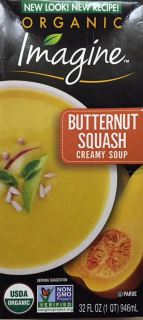 delicious, and full of fiber, potassium, Vitamin B6, folate, Vitamin C, and carotene, which are all extremely relevant and helpful for this eating plan. This makes for a very easy side dish for any meal, or is wonderful all by itself. Squash is indeed technically a fruit, and fruits are mainly avoided on this eating plan, but squash is incredibly low in sugar compared to all other fruits. I usually bake zucchini or add it to my vegetable sautees. It is also very easy to make fresh butternut squash soup.
delicious, and full of fiber, potassium, Vitamin B6, folate, Vitamin C, and carotene, which are all extremely relevant and helpful for this eating plan. This makes for a very easy side dish for any meal, or is wonderful all by itself. Squash is indeed technically a fruit, and fruits are mainly avoided on this eating plan, but squash is incredibly low in sugar compared to all other fruits. I usually bake zucchini or add it to my vegetable sautees. It is also very easy to make fresh butternut squash soup. - Fennel – Excellent source of fiber, vitamin C, and potassium. I usually roast fennel.
- Ginger – Added to vegetable dishes and included in most of my juices. Ginger is incredibly anti-inflammatory and immune boosting, among many other awesome healing components.
- Sauerkraut and other lacto fermented foods such as kimchi are welcome as well, as an excellent source of probiotics. Again, bioindividuality is always the most important, so keep in mind that fermented foods are very high in histamine, and if you have a notable sensitivity, a probiotic supplement would probably work better. It takes time, but eventually you will come to know your own physiological idiosyncrasies well and be able to tell what will and won’t work best for you (and when).
- I have begun incorporating some new raw vegetables into the mix, having avoided them for the majority of my active healing due to their incongruence with a slow oxidizer/metabolizer healing protocol. Cooked vegetables are also much easier to digest, so for about 2 years I only consumed cooked vegetables.
- Clearly, this list of vegetables is pretty small, but one can begin to gradually incorporate more variety after a temporary period of exclusion, such as higher FODMAP and cruciferous vegetables, etc. Also, needless to say, high FODMAP vegetables such as brussels sprouts, broccoli, cabbage, cauliflower, garlic, and onion are all wonderful foods that have a tremendous amount of healing and medicinal components! I used to cook copious amounts of them and was truly lost as to why my intestinal bloating was not improving, yet was very grateful to have discovered the FODMAP connection.
〉Other inclusions:
- Blueberries – The most antioxidant rich fruit and lowest in sugar. They are also an excellent source of fiber – see below for gut health/low sugar guidelines. I stopped eating fruit all together while healing my gut, yet blueberries are the most “acceptable” and low in sugar if one chooses to include them.
- Psyllium Husk is incorporated into my routine for the primary reason that it is packed with both insoluble and soluble fiber, both of which are imperative to aiding in the elimination of toxins/pathogens/excess hormones (specifically, excess estrogen). A diet that is very low or void in carbohydrates/grains stands the risk of being too low in fiber as well. I occasionally put the above pictured product in my juices. Fiber is also a “prebiotic”, meaning it is considered food for beneficial gut bacteria, rendering it even more imperative to include and emphasize in this eating plan. Most of the vegetables included are also an excellent source of fiber, and when I am sure that an item is organic, I will indeed eat the skin as to boost fiber intake further. Some can be sensitive to any form of fiber supplementation (experiencing an increase in symptoms such as gas, bloating, digestive distress), in which case focusing on high fiber foods would be ideal. Using smaller doses can also help lessen these symptoms.
- I make various juices. My recipes include lemon, fresh ginger root, greens, chlorella, cucumbers, beets, carrots, and celery primarily. Here is an example recipe of what I typically make, scroll to the bottom. Sometimes, I will also add a tablespoon of organic Psyllium Husk in order to
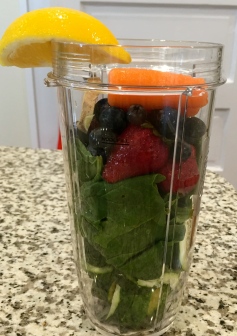 catalyze further intestinal cleansing. Also, Chlorella (in being free of copper as opposed to Spirulina as mentioned above) is PACKED with many awesome nutrients that are essential to load up on within this protocol including: tons of Vitamin A (wonderful for gallbladder function), zinc, iron, and a variety of immune boosting B Vitamins. As mentioned, I buy it in bulk powder form, easily found on Amazon, and it lasts for a long time. You can drink it straight (it has an earthy type taste that I don’t mind but may be fairly unpleasant for some), add it to your juices, or mix it with other powder-form supplements within your protocol.
catalyze further intestinal cleansing. Also, Chlorella (in being free of copper as opposed to Spirulina as mentioned above) is PACKED with many awesome nutrients that are essential to load up on within this protocol including: tons of Vitamin A (wonderful for gallbladder function), zinc, iron, and a variety of immune boosting B Vitamins. As mentioned, I buy it in bulk powder form, easily found on Amazon, and it lasts for a long time. You can drink it straight (it has an earthy type taste that I don’t mind but may be fairly unpleasant for some), add it to your juices, or mix it with other powder-form supplements within your protocol. - There is a pre-bottled drink sold at Whole Foods and other natural food stores called “Temple” (pictured to the right). It is WONDERFUL! Super conducive to a copper-conscious diet and general healing protocol as well. It includes turmeric (excellent for the liver), apple cider vinegar (excellent for the gut), ginger, lemon, horseradish,
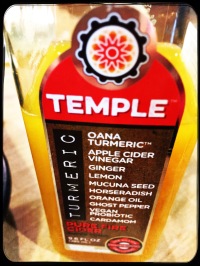 various peppers, and cardamom (all excellent for digestion, immune support, and blood cleansing). It is simply delicious and I do indeed feel energized after drinking it. Now that I’ve found this gem, I intend on including one a few days a week. And don’t worry, it does include ghost pepper, which is a very spicy pepper, but in very small quantities so it just has a slight kick.
various peppers, and cardamom (all excellent for digestion, immune support, and blood cleansing). It is simply delicious and I do indeed feel energized after drinking it. Now that I’ve found this gem, I intend on including one a few days a week. And don’t worry, it does include ghost pepper, which is a very spicy pepper, but in very small quantities so it just has a slight kick. - FRUIT: I have avoided all fruits except for the seldom incorporation of blueberries and blackberries and was for basically my entire protocol due to the sugar content. Fruits are wonderfully full of essential vitamins/nutrients, yet they are also very high in fructose, which is a harmful sugar that is even more of an issue when one is chronically ill and trying to balance the gut. As stated above, sugar in any form can really exacerbate underlying imbalances and toxicities, so it is not part of any healing eating plan. Before I found out I had Copper Toxicity, I was eating many fruits with the belief that this was serving me well. However, when in such an imbalanced state, the high fructose content of fruit will only exacerbate or create further imbalance. I do believe that my avoiding fruit for the entirety of my protocol has been highly beneficial for me. Some of the additional lower sugar options include blackberries, raspberries, strawberries, and cherries, which are also very high in antioxidants and are
 effective anti-inflammatory foods. Cherries are a little higher in sugar so they are best only eaten seasonally and in moderation. When I prepare for liver/gallbladder flushes, I drink organic, raw apple cider vinegar and take malic acid supplements as opposed to drinking apple juice. This is to avoid the extra sugar consumption and it has always worked very well. The malic acid and pectin in apples helps to cleanse the liver and loosen/soften gallstones, which aids in their elimination during the flush.
effective anti-inflammatory foods. Cherries are a little higher in sugar so they are best only eaten seasonally and in moderation. When I prepare for liver/gallbladder flushes, I drink organic, raw apple cider vinegar and take malic acid supplements as opposed to drinking apple juice. This is to avoid the extra sugar consumption and it has always worked very well. The malic acid and pectin in apples helps to cleanse the liver and loosen/soften gallstones, which aids in their elimination during the flush.
Note – some of the fruit options that have the highest sugar content are pineapples, pears, oranges, grapes, and bananas.
- Tomatoes (also considered a fruit) are an on and off inclusion. They are low FODMAP, yet high in histamine, lectins (which can exacerbate leaky gut), and what are called excitotoxins, so I go with my intuition on this one and they are usually only eaten occasionally. CT can cause a glutamate/GABA imbalance, in which case foods that are higher in glutamate will exacerbate this imbalance by increasing the already high excitatory neurotransmitter level (this can also happen with foods high in glutamine). This can also aggravate symptoms such as sleep disturbance and anxiety. I usually buy organic grape tomatoes (part of the “dirty dozen” which should be purchased all organic) and lightly sautee them at the very end of cooking a meal which makes them more digestible.
- Note: Regarding
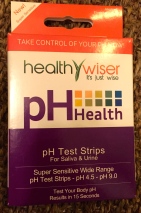 the topic of acidic/alkaline foods, I’ve purchased pH strips off of Amazon that work great and let me know which way to lean depending on the results, pictured to the right. There is some debate as to whether one’s body should be more acidic or more alkaline. I try to stay a little on the alkaline side personally, however we are all different of course, so your “normal” may be different. Some recommend that the colon remain slightly acidic to ward of gut pathogens and such, and the rest of the body should be more alkaline, which is what I’ve aimed for. My Comprehensive Stool Analysis/Parasitology test indicated that my colon is a little more alkaline than I’d like, so I do incorporate some acidic foods for this reason. I’ve made a delicious tomato sauce to top my vegetable and protein dishes with, as well as a wonderful homemade salsa. Fresh cilantro is key when making salsa, it makes it taste super fresh! As stated below, cilantro is also exceptional for catalyzing overall detox.
the topic of acidic/alkaline foods, I’ve purchased pH strips off of Amazon that work great and let me know which way to lean depending on the results, pictured to the right. There is some debate as to whether one’s body should be more acidic or more alkaline. I try to stay a little on the alkaline side personally, however we are all different of course, so your “normal” may be different. Some recommend that the colon remain slightly acidic to ward of gut pathogens and such, and the rest of the body should be more alkaline, which is what I’ve aimed for. My Comprehensive Stool Analysis/Parasitology test indicated that my colon is a little more alkaline than I’d like, so I do incorporate some acidic foods for this reason. I’ve made a delicious tomato sauce to top my vegetable and protein dishes with, as well as a wonderful homemade salsa. Fresh cilantro is key when making salsa, it makes it taste super fresh! As stated below, cilantro is also exceptional for catalyzing overall detox. - I do incorporate some lemon and lime as well. Histamine release can be catalyzed by citrus, so I include them in moderation
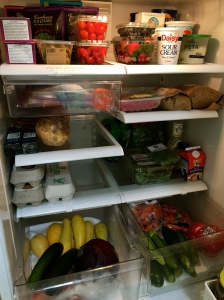 . Lemons are also excellent for liver health – very important when treating CT! And contrary to popular belief, lemons have an alkaline effect on the body as opposed to an acidic effect…I know, it’s very enigmatic. Lemon also helps to add flavor to the copious amounts of water that I drink so that is a plus. You can also add fresh basil, sliced lime, and fresh cucumber to water, making batches in a pitcher and it is simply delightful!
. Lemons are also excellent for liver health – very important when treating CT! And contrary to popular belief, lemons have an alkaline effect on the body as opposed to an acidic effect…I know, it’s very enigmatic. Lemon also helps to add flavor to the copious amounts of water that I drink so that is a plus. You can also add fresh basil, sliced lime, and fresh cucumber to water, making batches in a pitcher and it is simply delightful! - It is very important to buy seasonal, local produce whenever possible! Not only does this provide you with the highest quality foods, but it also supports your local economy. Most towns and cities have weekly farmers markets, which are amazing to roam through and collect your goodies. I’m happy to live in an area that houses many excellent local farmers, that I try my best to support as often as possible.
〉Regarding dairy, I have eaten it sporadically in the past, but have totally excluded it for now, and probably will indefinitely (with the exception of organic butter and ghee, which is technically considered dairy, but is mainly a fat). Some have sensitivities or allergies to lactose and/or casein found in dairy products, which is important to be mindful of. In this case, organic ghee is a great substitute for butter, as it is free of both lactose and casein. In general, raw dairy is the best (although hard to find sometimes), and it can actually be good for gut health as opposed to harmful, as many of the processed and pasteurized varieties of dairy products can be.
Hard cheese like cheddar and provolone are welcomed on the low FODMAP diet as well. Aged cheeses are indeed higher in histamine, with options like mozzarella being tolerated better. There is a raw cheddar that is simply amazing that I found at Fresh Market back when I still ate cheese, and most co-ops or Whole Foods type stores will have several varieties of raw cheeses – one of the brands is “Organic Valley”. I absolutely stayed away from all milk, 1/2 & 1/2, and things like that, which can also perpetuate or exacerbate an underlying yeast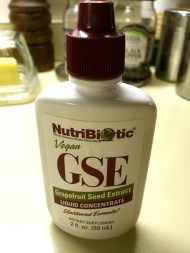 overgrowth in the intestines.
overgrowth in the intestines.
- If one has a particularly severe gut pathogen infection (fungal, parasitic, bacterial) or severe gut dysbiosis, excluding dairy all together is usually best, as it can increase mucous production in the gut and feed pathogens.
- Dairy can also be quite inflammatory, which is certainly not conducive to healing, especially with more severe cases. This is important to keep in mind.
***Fun Fact: I use Grapefruit Seed Extract oil to clean all of my produce. I simply put whatever vegetables in a big bowl with warm water and about 20-30 drops of GSE and let it sit for about 10 minutes. It works great to wash off any remaining pesticides that may be present, and it is also anti-parasitic, anti-fungal, anti-bacterial, and anti-viral. I have also used my ozone generator to clean produce, which is a machine that essentially supercharges oxygen into water and eradicates any impurities or unwanted organisms. Thieves vegetable spray by Young Living is also wonderful and very easy to use. You simply spray it on your produce, wait 30 seconds, and scrub off.
***Another Fun Fact: I am absolutely in love with Apple Cider Vinegar! It has really an endless array of healing properties including immune support, gut healing, liver cleansing, overall detox, and increasing stomach acid. It is very important to make sure HCL is in adequate supply, as this is the first step in ensuring our elimination and digestive pathways are working optimally, supercharging assimilation and absorption of all vital minerals and nutrients, as well as optimizing bile flow. When I drink ACV, it really makes me feel good.
I always keep a large bottle on hand at all times and usually just add about a tablespoon to a little bit of spring water and drink it that way. I even 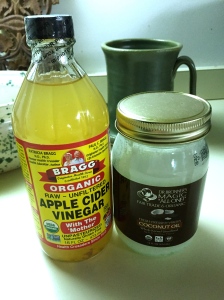 use it for topical purposes like healing scars. Purchasing organic, raw, unfiltered, “with the Mother” ACV is key, NOT the clear, distilled variety. I love Braggs brand, which is a wonderful one (pictured to the right, along with a fabulous coconut oil variety that I commonly use…you can find much larger, cost-effective versions online and at Costco though).
use it for topical purposes like healing scars. Purchasing organic, raw, unfiltered, “with the Mother” ACV is key, NOT the clear, distilled variety. I love Braggs brand, which is a wonderful one (pictured to the right, along with a fabulous coconut oil variety that I commonly use…you can find much larger, cost-effective versions online and at Costco though).
All other types of vinegars are avoided, as they are high in histamine, and can exacerbate gut imbalance. While ACV is indeed a vinegar as well and hence has a notable histamine content, it is always about balance, and as long as I am watching other higher histamine foods, it is tolerated quite well. I also take breaks in between uses.
Here is an outline of an immensely important primary focus within any effective, comprehensive healing protocol: gut health.
GUT HEALTH
As is becoming increasingly more well-known, our gut health and maintaining optimal balance of beneficial bacteria in the GI tract is absolutely essential for many hugely important physiological reasons. Some of these include:
- ensure optimal immune function
- Protection against invading pathogens such as parasites, pathogenic bacteria/”bad” bacteria, fungus, and viruses
- nutrient absorption and assimilation
- maintain optimal nutrient levels – as some probiotic strains actually endogenously produce nutrients for our body to utilize
- neurotransmitter metabolism
- mental and emotional health
- hormone balance
- weight management
- overall digestive capacity
- gut lining/intestinal mucosa integrity
- optimal gene/epigenetic expression
- detoxification (of excess estrogen and heavy metals among many others)
- DNA repair
- reduction of chronic inflammation
- a whole host of other highly important physiological functions and systems
The gut is often referred to as the “second brain”, as an entire nervous system, called the enteric nervous system, is present along the comprehensive digestive tract! Our neurotransmitter balance plays a huge role in our overall well-being, both physically and psychologically, so when there is imbalance in this area, the consequences are far-reaching. The gut is truly a hub in our bodies, and the beneficial bacteria that reside there can very accurately be described as our life force. Our microbiome, the total population of bacteria and organisms that reside in our gut, is our first line of defense against illness and imbalance, and serves as one of the most significant areas of focus when it comes to healing.
The microbiome is comprised of a delicate balance of copious strains of beneficial bacteria and minute amounts of pathogenic organisms such as fungus, parasites, bacteria, and viruses. The key word there is BALANCE. As long as one’s supply of beneficial bacteria remain relatively in-tact, this balance is maintained and the “bad guys” are harmless as they are being kept in balance by the “good guys” (some say an 85% “good guys” to 15% “bad guys” is optimal). However, due to many very common influences in our modern world, plus a specific disruption related to Copper Toxicity, millions and millions of people suffer from compromised gut health.
What is happening to all of the good bacteria in our gut?
When present in ideal, bioavailable levels, copper is a natural anti-fungal and greatly aids in keeping the gut microbiome in balance. However, when it begins to rise and reach bioUNavailable levels, gut imbalance can be catalyzed, allowing pathogenic yeast (which in its pathogenic form becomes a fungus), parasites, bacteria, and other endotoxins to outweigh the oh-so-important beneficial, health-promoting, and immune-boosting bacteria.
Furthermore, many of the residual imbalances that Copper Toxicity can propel such as susceptibility to infection/lowered immune function and zinc deficiency, all lead to compromised gut bacteria as well. Several additional common contributors would be the overuse of antibiotics/steroid pharmaceutical drugs, conventional birth control (specifically “the pill”), high sugar/low fiber diets, cesarian section births (which are clearly sometimes unavoidable), not breast feeding, and GMO/pesitcide/preservative laden “food” products all greatly eradicate good bacteria or contribute to the overgrowth of pathogenic organisms.
All of these copious contributing factors can produce severe gut imbalance, which in turn leads to a host of various symptoms and can have a detrimental effect on overall physiological balance. That being said, it is extremely important to focus on gut health undoubtedly.
Hippocrates once stated that “all disease begins in the gut”, and this statement indeed holds a tremendous degree of truth!
Another important reason to support and heal the gut is that one of the main elimination pathways of copper is through the liver and hence the bile. Therefore, once the liver sends excess copper within the bile through the gallbladder, it enters the small and large intestines to be eliminated via stool. However, if one’s gut is compromised for any number of the common reasons mentioned above, this elimination pathway will be obstructed, and toxic, unbound copper will be reabsorbed into the body, making a detoxification and balancing protocol counterproductive.
This is also the exact same case with excess estrogen, which as we know is synergistic to copper, each rise and fall concurrently. Excess estrogen in the body causes one to acquire an imbalance referred to as estrogen dominance which includes a host of additional symptoms, and leaves one highly susceptible to further illnesses. So ensuring one’s gut is balanced and sealed is essential to the successful elimination of aggravating factors such as excess copper, estrogen, and any other unwanted, toxic substance in the body that is detoxified via the liver.
Fortunately, there are many different lifestyle and dietary shifts that that one can implement as to repair their compromised microbiome and support optimal gut health during active healing and throughout life.
Following a diet that is free of most sugar/simple carbohydrates is key.
Essentially, simple carbohydrates are sugars that are broken down quickly by the body and catalyze spikes in blood sugar. This is not conducive to healing and maintaining homeostasis. These foods also feed gut pathogens such as fungus and parasites.
They include:
White breads, pastas, candy/ice cream/cakes/sweets, sodas, fruit juices, fruit, crackers, conventional sauces such as ketchup and bbq sauce (including high fructose corn syrup), pizza, packaged cereals, white potatoes, jelly/jam, most all processed conventional foods today contain high fructose corn syrup or added sugars of some kind.
These items are obviously very popular within many western diets (also called SAD: Standard American Diet), however it is important to avoid them.
Your body is your temple, and it’s optimal function depends on optimal nutritional choices.
It is also healing to the gut to go completely gluten-free as this protein and common allergen found in wheat can irritate the gut lining and lead to leaky gut/intestinal permeability (discussed further below), which in most cases exists as the underlying cause of the development of autoimmune disorders. Eliminating gluten also reduces the overall stress on your digestive system, which is already compromised due to excess copper. Human beings were actually never meant to consume wheat as a food item, as our bodies do not produce the enzymes to break it down properly, hence all of the turmoil it can and does cause within our bodies. Once “food” production companies became aware of how cost-effective mass production of wheat products were, this element became popular. In this case, do believe all of the hype when it comes to gluten, simply taking this one step in your journey will do a world of good.
While it is important to remove most or all grains and sugar to start, one can use gluten-free complex carbohydrate ingredients such as quinoa (sprouted is preferred), rice products (brown rice only, as opposed to white – see important note below), and corn products (making sure that they are non-GMO and organic) in the transition, and after a period of time once the GI tract has improved in function. Remain mindful of possible sensitivity or allergy to these, as corn is a common allergen.
Beans are also considered a “good” complex carbohydrate, yet they are rather high in copper and lectins and hence should be avoided. Complex carbohydrates are broken down more slowly in the body, and are higher in fiber and nutrients, and hence do not catalyze dramatic spikes in blood sugar, making them much more conducive in achieving physiological balance. Insoluble and soluble fiber serves as food for good gut bacteria, making foods high in fiber such as complex carbohydrates and a myriad of vegetables (as mentioned above) very important to include in one’s eating plan.
*Note regarding rice: Most forms of rice today are contaminated with inorganic arsenic so alternate complex carbohydrates/grains are more preferred, if one is eating grains at all. Rice from California is said to be among the safest. Preparing rice with more water than usual and draining the excess water once cooked has been shown to greatly reduce the amount of arsenic present.
There are also a lot of “flours” that are made of allowed ingredients like quinoa, and can really help to give your cooking more variety. Almond flour is a popular traditional flour substitute, but should be avoided for a while. On 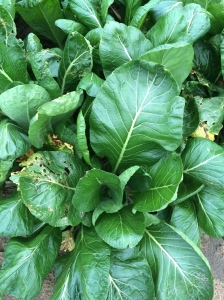 holidays, however, I do make an incredible, very simple, almond flour cookie recipe. They are so delicious! Here is the recipe!
holidays, however, I do make an incredible, very simple, almond flour cookie recipe. They are so delicious! Here is the recipe!
Eating lacto-fermented foods (those foods that are naturally fermented such as sauerkraut and kimchi, not distilled vinegars and/or pickles) can also be helpful for the gut in repopulating “good” bacteria. This helps boost our immune system (as a huge portion of our immune response is housed in the gut) and ensures optimal gut balance. It took me a while to figure this out, as a lot of protocols simply say “fermented foods,” yet leave out the fact that there are two completely different kinds – one being highly advantageous to gut health, and the other being harmful.
Apple Cider Vinegar is different than other distilled vinegars. The compounds in ACV actually make it a form of “prebiotic” which is essentially food for the “good,” health promoting bacteria in your gut. It’s kind of similar to the fact that root vegetables like rutabagas are great for gut health, but potatoes are not. They are of a similar variety, but are handled within the body in very different ways. Make sure to check the label of lacto-fermented foods, because some of them have been pasteurized which is a heating process that kills the live bacteria in them (often the standard deli varieties will have been pasteurized).
I love a brand called “Farmhouse Culture” which comes in a resealable bag and has a variety of different recipes like ginger beet, horseradish and leek, and traditional caraway seed – so delicious. They also keep for a while in the refrigerator due to the live bacteria which sort of acts like a natural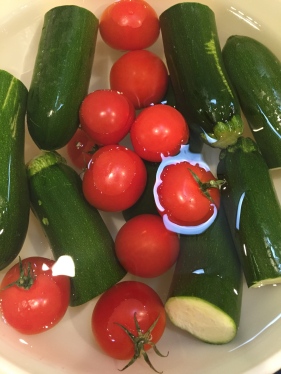 preservative. This is why sauerkraut was eaten so frequently long ago, as it could sustain itself without spoiling for long periods of time.
preservative. This is why sauerkraut was eaten so frequently long ago, as it could sustain itself without spoiling for long periods of time.
Sometimes even the lacto-fermented variety can be problematic for those who have a severe gut imbalance so it is once again important to assess your own bioindividuality regarding this addition, and to get to the place where you are very in-tuned with your body and able to notice quickly if something “does not sit well” with you. Start with small quantities and monitor how you respond. You can and will experience symptoms like bloating and mild digestive upset as your gut rebalances, yet I’ve found that if I experience this for longer than a few days when experimenting with a new item it isn’t simply a detox symptom and I cease the consumption of that item. You’ll get better at deciphering these things eventually, and try to take it one step at a time, as this can be overwhelming. No worries, you will get there!
Additionally, several key considerations to remain aware of are:
- Fermented foods are also quite high in histamine, which many with Copper Toxicity are sensitive to, so this is important to keep in mind. If you have had genetic testing done (such as 23andme), and find that you carry the CBS, MAO, or DAO gene variants, you likely have a heightened sensitivity to higher histamine foods due to mast cell activation. Also, ironically, one can have a difficult time breaking down excess histamine if they have compromised gut health, as there are specific enzymes produced in the gut mucosa that play a large role in ensuring histamine balance. Some strains of gut bacteria produce histamine as well, which can tip the scale too far in one direction. Furthermore, gut imbalances such as SIBO, bacterial infection, parasitic infection, and fungal overgrowth can all cause mast cell activation/histamine intolerance, rendering one more sensitive to higher histamine foods. While fermented foods are indeed an excellent source of diverse probiotics, as usual, remain conscious of moderation and your own bioindividual needs.
- A whole blood histamine test can give you a general idea if your histamine levels are imbalanced.
- Kombucha (which is a fermented tea) is often highly recommended for gut healing. It can contain aledhydes, which are harmful for the liver and can exacerbate gut imbalance. Personally, I’ve always had a sort of adverse reaction to kombucha, and now I know why. Kombucha can be an amazingly healing component however, so it once again comes down to following your intuition and remaining mindful of what you feel is best for you.
- Leaky Gut/Intestinal Permeability is a very common and important realm of gut health and healing. Leaky gut is a condition where the intestinal lining (called the mucosa) becomes permeable due to pathogenic organisms, food triggers, and other aggravating factors essentially “poking holes” in it. This allows undigested food particles and other foreign matter to enter the blood stream and greatly aggravate and confuse our immune function and balance, often propelling the body to develop antibodies that end up “attacking” its own tissues. These food particles that leak into the blood stream are treated as a foreign substance, propelling a chronic inflammatory response (and the endless symptoms that go along with chronic inflammation) and sensitivity/intolerance to various foods. Leaky gut serves as the root cause of most autoimmune conditions such as Hashimoto’s Thyroiditis, Graves’ Disease, Rheumatoid Arthritis, Multiple Sclerosis, Lupus, and others.
- Often, practitioners will recommend one take the amino acid glutamine, as glutamine is helpful for sealing the gut lining and hence healing leaky gut. However, if one has an imbalance in the neurotransmitters glutamate and GABA, they could be very sensitive to glutamine, as it is readily converted to glutamate in the body. A glutamate/GABA imbalance means an imbalance in excitatory and inhibitory neurotransmitters, aka “excitotoxicity,” which often results in symptoms such as anxiety, headaches, irritability, brain fog, and heart palpitations. This imbalance is common in copper toxic individuals because high, toxic copper levels directly interfere with the conversion of the excitatory glutamate to the inhibitory/calming GABA.
There are also other common contributing causes to this imbalance such as mercury toxicity, the GAD gene variant, and others. Therefore, if one consumes extra glutamine, this imbalance could worsen. You will know if you have a sensitivity if you notice that you experience worsened anxiety and agitation when supplementing with glutamine, or any of the aforementioned symptoms.
If in fact this is the case, using agents such as zinc, glycine (another intestinal mucosa healing amino acid which also functions as a balancing, inhibitory neurotransmitter), omega 3 fish oil, marshmallow root, slippery elm tea, liposomal powdered colostrum, serum-derived bovine immunoglobulin (similar to colostrum in its gut healing properties but dairy-free), aloe vera juice, and/or butyric acid (a short chain fatty acid that is essential for the cells that line the colon/large intestine) – all of which also heal the gut lining – can be helpful alternatives. Bone broth (chicken, turkey, and/or beef bones) is also a superfood of sorts that is used to heal and seal a leaky gut. It does contain glutamine, yet it can be more tolerable than singularly using glutamine, in that it is comprised of a variety of other amino acids (including glycine) and nutrient cofactors that provide better nutritional balance. The collagen found in the bones is the primary healing component, as it is vital for healing the body’s connective tissues (collagen powder is also used for healing the gut lining for this reason).
Caution must be exercised again however, as bone broth is also very high in histamine. Personally, I experience glutamate/GABA imbalance symptoms when taking glutamine singularly, when taking collagen powder, and when drinking bone broth, as I have the GAD gene variant (as well as several SNPs that can cause histamine sensitivities) and was actively eliminating copper for a long period of time. While healing a long-standing parasitic infection and balancing copper, I took powdered colostrum as well as the above mentioned agents to build my intestinal lining integrity. A maintenance dose is still taken periodically.
-
-
- Glutamate/GABA Imbalance Point: As stated above, this imbalance of excitatory and inhibitory neurotransmitters is common in those with Copper Toxicity. If you find yourself notably sensitive to glutamine and/or bone broth, avoiding other foods high in glutamate will be helpful to reduce “excitotoxicity” symptoms. Dealing with CT alone can cause heightened anxiety, brain fog, and other uncomfortable symptoms so the more steps that can be taken to reduce the exacerbation of these symptoms and their origin, the better.
-
High glutamate foods include peas, tomatoes, wheat, dairy, all bone broths, glutamic acid, pectins, broccoli, MSG, conventional flavorings, preservatives, dyes, and chemicals, soy, whey protein, aspartate, cysteine, malts, guar gum, mushrooms, walnuts, bouillon, gelatin, hydrolyzed products, and corn syrup. Supplementing directly with glutathione can also cause issues because glutamate is part of the tripeptide that makes up the glutathione protein. Also, supplementing with other singular amino acids can exacerbate these symptoms as well, so extra caution must be exercised there. A lot of these food items are already high in copper so they are already avoided on this protocol. Remaining conscious of these foods has helped me dramatically in reducing anxiety, headaches, sleep cycle disturbance, and other excitatory symptoms.
Probiotics are also hugely important to supplement with indefinitely as to make up for the lack of beneficial bacteria that many of us have. There are a tremendous variety available today, however all are most definitely not created equal. After trying upwards of 30 to 40 different kinds of probiotics, I have found several probiotics that have shown brilliant efficacy and tangible repopulation of my intestinal microbiome. Most probiotics on the market are simply ineffective as they are not formulated to survive stomach acid and bile and hence do not reach your small and large intestine/colon successfully, or they do not contain enough live Colony Forming Units to make a notable difference.
Note: most probiotics are heat sensitive and need to be kept in the refrigerator. If ordering online, it is helpful to find a seller that is mindful of shipping them in insulated containers with a cool pack. Unless the product specifically states that it is shelf stable, it is best to always store probiotics in the refrigerator.
My top 5 recommendations for probiotics can be found here.
Including plenty of prebiotics is an obligatory addition while taking probiotics and working to repopulate the microbiome. Prebiotics feed good bacteria and encourage their proliferation in the GI tract. Foods such as onions, raw asparagus (yes, most vegetables should be cooked, but eating pickled asparagus or munching on a raw piece or two every few days is fine), raw garlic, dandelion greens, raw leeks, and others. Inulin is another prebiotic that is found in jerusalem artichokes and chicory root. Acacia gum is also an effective prebiotic. Sensitivities are common with gut imbalance, so paying close attention to any reactions and following the low and slow rule is always helpful.
Another important area to consider is the diversity of the microbiome. As stated above, there are tremendous variety of different strains (hundreds and hundreds, in fact) of bacteria in our GI tract, so only focusing on a few will be counterproductive. It is said that there is between 2 to 6 pounds of bacteria housed here! Also, the gut microbiome contains 100 times more genes than your body’s total genome.
That said, using a probiotic with many strains of bacteria, rotating your probiotic every month or 2, incorporating lacto-fermented foods (as tolerated), and consuming prebiotic fibers (as tolerated) all work to ensure your microbiome diversity.
Repopulating the gut with beneficial bacteria is often more effective once a full biofilm/gut pathogen eradication protocol has been implemented, as eliminating pathogens such as parasites, yeast, and harmful bacteria is imperative, and once this intrinsic stressor is eliminated, repopulation can commence much more sufficiently and lastingly.
- Biofilms are an important part of the process, and are left out of many common gut healing protocols. They are protective barriers built around pathogens that are often resistant even to the most powerful anti-fungal, anti-parastic, and anti-microbial healing agents (such as Grapefruit Seed Extract, Wormwood, Black Walnut, Neem, etc.). They are broken down by various means including the use of proteolythic/systemic enzymes. These enzymes, when taken on an empty stomach, are designed to dissolve the biofilm composition which is primary made of protein and sugar. I’ve used two different biofilm-specific enzymes with success. Cistus incanus tea is also an excellent biofilm buster.
General Areas That I Consider and Adhere To:
COOKING: Seeing as convenience is an essential part of eating, I have found it helpful to cook in bulk and eat portions of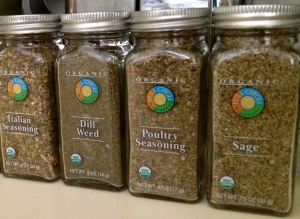 these foods over the course of the week. For example, spending Sunday afternoon cooking a bunch of foods and keeping them in the refrigerator or freezer to heat up on the stove or in the oven later (I try not to use a microwave).
these foods over the course of the week. For example, spending Sunday afternoon cooking a bunch of foods and keeping them in the refrigerator or freezer to heat up on the stove or in the oven later (I try not to use a microwave).
Pressure cooking and crock pot cooking are also excellent ways to prepare fresh foods conveniently. Also, before I found out I had Copper Toxicity, I hardly knew how to cook. I would shop for what I was eating over a couple days, and buy a variety of pre-made foods. While I frequented Whole Foods’ hot bar and things like that, I’ve much preferred preparing my own foods and doing weekly grocery shopping, as that way, I’m absolutely sure of what goes into the food. Shortly after I discovered my copper imbalance and at the beginning of my healing program, I started slow, and now truly enjoy cooking and rarely follow a recipe. It’s great to get creative and try to enjoy the process, as we kind of have to get creative with this kind of eating plan!
Using spices such as oregano (great for gut health), sage, basil, turmeric (excellent for liver health), fresh cracked black pepper, fresh ground sea salt (a much better option than table salt, which is loaded with preservatives), coriander, cumin, cilantro (both fresh and dried, which has been used for heavy metal detox and overall toxin elimination frequently) etc. really enhances my dishes and adds to the creativity and overall enjoyment.
- Curry powder, garlic powder, and onion powder are higher FODMAP but excellent for flavor enhancement. Moderate use was fine for me when I was eating low FODMAP and if FODMAPs are not an issue for you, these spices are excellent additions to your protein and vegetable dishes.
- Also, since I have been working on healing my gut and try to avoid contact with parasites and other pathogens, I purchase large boxes of disposable food handling gloves that I wear when handling all meats. They are helpful when handling beets and turmeric also, which both tend to stain your nails either bright pink or bright yellow.
Throughout the majority of my protocol, as mentioned above, I have cooked most of my vegetables, which makes them easier to digest and lessens abdominal bloating (as well as making them conducive to a “slow oxidizer” eating plan). Now that balance has been obtained, I do incorporate more raw foods here and there, however sticking with mostly cooked has been the most comfortable route for me. I do juice with all raw ingredients, which is highly beneficial in that the nutrients are more bioavailable this way and readily assimilated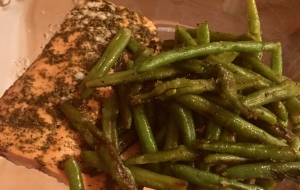 .
.
****I only use stainless steel and glass cookware and absolutely avoid all copper materials as well as all plastics due to their xenoestrogen properties****
CONVENIENCE!: I am absolutely aware and understand that convenience is key when it comes to food and its preparation, especially when preparing for your family and not simply yourself – so I am always on the hunt for items that are easy and fit the bill regarding the dietary guidelines for this eating plan. I am always keeping an eye out for new items and love when I come across new treasures that are all-natural, and only include whole food ingredients! As I’ve mentioned before, a wonderful method that I utilize is to cook everything in bulk, as this way I am able to simply reheat meals in the oven or stovetop fairly quickly as opposed to preparing everything from the beginning for each meal (while that would be ideal, it is simply impractical) :). Here are some recent gems that I’ve found that have added some additional help in the convenience department:
- All-natural/organic frozen vegetables: Of course fresh is best, however, these are the next best thing, and to find that there are several new selections of all-natural/organic frozen vegetables is very exciting! “Alexia” herb green beans are divine, simply heat them in a stainless steel pan with olive oil – perfect as a side dish for any protein entree. Also, I’ve recently found non-GMO frozen butternut squash and beets by “Stahlbush Island Farms”. They are both delicious – all you need to do is put them on a baking sheet or in a roasting pan with some olive oil, sea salt, cracked black pepper, and I usually dust them with ground sage, and bake at 350 for 20 to 25 minutes. “All-natural” is not equivalent to organic, and while I try to eat mostly organic foods, sometimes “all-natural,” meaning free of extra chemicals and preservatives, etc. is acceptable.
- Pre-prepared vegetable juices: While yes, fresh is always best, the fact that there are now pre-made vegetable juices is truly awesome and very welcomed! I always check out bottled juice selections and am usually met with a variety of sugar and fruit infiltrated options, however, I have found two that are go-to’s and only include “allowed” vegetables. These are “Evolution Fresh – Essential Greens with Lime” and “Forager – Greens & Greens”. The first is actually sold at Starbucks which is great, and lots of grocery store chains like Whole Foods. It only includes celery, cucumber, spinach, romaine lettuce, kale, lime, and parsley. I only stick to the “with lime” variety, as the “with lemon” contains apple, and I am still strictly avoiding most sources of sugar. The “Forager” juice contains cucumbers, celery, kale, romaine lettuce, lemons, limes, fennel, parsley, sprouted quinoa, basil, sea salt, and ceyenne pepper. I can’t get over how beautifully healing each of these ingredients are and how perfect this combo is for this eating plan! Yes, there is spinach and kale included which can be higher in copper, however, as stated above, as long as the majority of other high copper foods are avoided, it is ok to consume some, especially when combined with each of the other wonderful ingredients.
- Prepared meats: There are a fair amount of prepared organic meat selections sprouting up as well – as discussed above and below. These are an occasional option when you are on-the-go as the preparation only involves heating. These can be eaten by themselves or added to a chili or any type of entree really, very versatile.
PRACTICALITY: Overall, this eating plan involves a lot of at-home preparation and is quite strict. However, remember that you still have to live. This means that in general, you do what you can to adhere to the eating plan to the best of your ability. There are going to be times when it is much easier and times when it is more difficult, you just try your best and do what you can.
FOOD SAFETY: Making sure that your refrigerator and freezer are set at optimal temperatures is key to ensuring that bacterial overgrowth on foods is kept at bay. The ideal temperature for a refrigerator is between 33-40º F, with 35-37ºF being best. The ideal temperature for a freezer is 0ºF. Because most appliances do not display the exact temperature, using a refrigerator/freezer thermometer is helpful. I use two different digital thermometers, to make sure that the reading is correct in comparison for both. I also use non latex food prep gloves when handling raw meat, although that is totally optional. Be sure to avoid cross-contamination and make sure that all food-prep areas are kept clean.
PROCESSED FOODS/LUNCH MEATS: I absolutely avoid all processed and “fast foods.” A helpful notion to stick to is remaining primarily on the outside circumference of the grocery store, which is where most of the produce, meats, and fresh foods are housed. As stated above, all meats are typically prepared fresh. However, when traveling or when on-the-go, organic sausages or organic lunch meats (mainly turkey) are eaten from time to time. Almost all brands contain harmful nitrates, added hormones, antibiotics, are fed GMO and pesticide laden diets, and a slew of other less than optimal ingredients. However, there are a select few organic varieties that are acceptable. It is key to avoid all conventional processed meats, as they can contain harmful, unneeded ingredients.
- The photo above is of the herb baked salmon that I prepare for myself very often. I describe the general preparation and ingredients in my “Typical Day” section below. It is super easy and makes for an absolutely delicious meal!
FOOD LABELS: It is important to get in the habit of reading food labels. It is safe to assume that basically everything has added sugar until proven otherwise…even foods you would never think do! Some common names for added sugar include sucrose, dextrose, cane sugar, corn syrup, fructose, lactose, maltose, and sorbitol, however there are tons of other names that added sugars go by…basically if it looks strange and/or I can’t pronounce it, I stay away from it :). Also, wheat is included in a lot of non assuming products as well, like beef jerky. This is unfortunate, but I’ve just gotten in the constant habit of reading labels in order to avoid any inclusions which are not welcomed on this protocol. I always keep an eye out for all unwanted ingredients such as additives, preservatives, coloring/dyes, sugar, wheat/gluten, yeast, soy, high glutamate ingredients (discussed above), and others.
WATER: Copper piping and/or copper content in well or public water supplies is a major catalyst for Copper Toxicity, so I switched to all jug water upon my discovery of this. I had the water in my neighborhood checked and it indeed contains just under what is legally “allowed” for the copper content of well water…I wasn’t willing to take the risk (you can easily get your water tested by your city/neighborhood or often you can find the mineral content online). For the first year of my detox, I stuck to only distilled water, but have since switched to spring water as it is an additional helpful way to attain our various mineral/vitamin needs. Each jug is only 99 cents.
There are other options as well, such as purchasing the large 5 gallon jugs which last quite a while. Either way, it is essential to drink tons of water to keep your detox flowing well. I also only drink out of glass or stainless steel containers, as plastic contains xenoestrogens (described above) that can leak into your water, which can further exacerbate CT, as well as a lot of other maladies. I use a “Hydro Flask” (purchased from rei.com) which is AMAZING! It keeps whatever you put in it either hot or cold for well over 24 hours, best water bottle I have ever had for sure – if you put ice cubes in it, they will still be there the next day!
- Regarding the water I use for cooking: I decide which to use depending on the dish. For example, if I am boiling beets or carrots (both porous vegetables that soak up the liquid they are immersed in) I will use my jug spring water, but if I’m hard boiling eggs I use tap.
EATING OUT: this was a tough one at first, yet I’ve come to find out that I can find animal proteins and vegetables on most menus. Salads are also ubiquitous, so they are an option. If available, I’ll always go for cooked foods while at restaurants, because you can’t always guarantee how fresh greens have been washed or handled, and they can be a possible source of parasites. The restaurant industry is slowly but surely catching on to the whole food movement, so I’m happy to say this can and will make it easier for us in the long run.
When traveling, I try to find an IHOP or something like that and just get an omelet…or a Cracker Barrel, which has vegetable and meat options as well. Clearly, these are not restaurants I want to eat at often, as the sourcing of the products is by no means organic haha, yet when on the road, its way better than eating convenience store food or fast food for sure. It’s also helpful to pack a cooler when you travel, with some prepared foods and such, which I do every time, even if it’s just a one hour trip. I try to eat every 2 to 3 hours (to maintain steady blood sugar), so having my travel cooler on hand works well for that. Also, as I describe below, I often keep a meal packed in my cooler in the car when I’m going to be away from home for a while…this is for peace of mind and is helpful if you get caught away from home with nowhere to find an acceptable snack or meal.
THE SOCIAL ASPECT OF FOOD: most social gatherings are centered around food to some degree, which can be challenging as most parties are not showcasing a “copper friendly” array of foods! 🙂 However, you can often find that there will be a vegetable tray or a meat option that will work for you. I also tend to eat to the point that I am full before attending such gatherings, in preparation for the fact that there may not be anything I can eat.
- During the most intense periods of detox, social gatherings weren’t an issue simply because my debilitating fatigue and illness rendered me incapable of attending them. Have no worry though, this is not forever, and as you gradually balance, you’ll be up and ready to take part in such occasions happily and healthily.
TEAS: I drink tea often, mainly ginger, white oak bark, parsley, cistus incanus, and peppermint/spearmint, which are all great for overall digestive health. All tea varieties must be caffeine-free. There are a lot of varieties of medicinal teas, which can spice up the mainly water drinking component of all of this. I like nettle tea as well,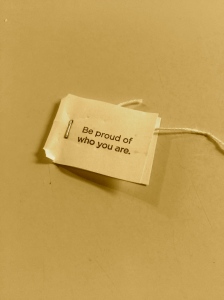 which is really an amazing plant for all of its healing qualities (it is a diuretic so I keep that in mind and don’t drink it anytime near when I wish to go to sleep for the night). Nettle tea has a very different, earthy taste to it so some may not find it appealing…I’d say it tastes a lot like hay (which I’ve never eaten hay, but if I had to guess what it tasted like, Nettle tea would be it 🙂 ) Pau d’Arco is another great one, which has effective anti-fungal properties, so I’ve used that it in the past with success.
which is really an amazing plant for all of its healing qualities (it is a diuretic so I keep that in mind and don’t drink it anytime near when I wish to go to sleep for the night). Nettle tea has a very different, earthy taste to it so some may not find it appealing…I’d say it tastes a lot like hay (which I’ve never eaten hay, but if I had to guess what it tasted like, Nettle tea would be it 🙂 ) Pau d’Arco is another great one, which has effective anti-fungal properties, so I’ve used that it in the past with success.
Dandelion leaf/root tea is also excellent, particularly for liver, kidney, and digestive health. Dandelion is a diuretic as well, and is a bit high in sulfur, so be mindful for those whom are sulfur sensitive. Chaste Tree tea is also great, as this herb is extremely effective at supporting estrogen metabolism. It has a very strong, pepper-like taste. Sometimes there is a limited selection at traditional grocery stores, but the online marketplace is full of awesome teas to order and enjoy. I’ve also found it refreshing to add ground ginger and lemon to my tea, I like tons of ginger, but it can be strong so know that a little can go a long way.
- It is advised to avoid coffee and other drinks containing caffeine, as these stimulants can exacerbate adrenal fatigue and gut imbalance. Caffeine signals the adrenal glands to release cortisol and adrenaline, which can have a detrimental effect on recovering adrenal health. In most cases of Copper Toxicity, one is already in a state of adrenal insufficiency and rebuilding adrenal strength and function is absolutely obligatory to healing and balancing copper levels.
Coffee does have a relativity beneficial nutritional profile and does contain antioxidants, however the drawbacks in this case outweigh the benefits. In addition to taxing the adrenals further, upsetting digestion and compounding gut imbalance, caffeine can also lower GABA neurotransmitter levels. As discussed above, high glutamate and low GABA, as is experienced by many with CT, can cause very unwelcome symptoms such as anxiety, panic attacks, depression, fatigue, heart palpitations and more.
As a previous coffee lover, I know how difficult it can be to say goodbye to your regular morning coffee, but it is worth it. Explore lots of different caffeine free teas, and enjoy those as much as you’d like. After a notable period of exclusion and after notable balance has been achieved, reintroducing moderate coffee consumption is ok. Always listen to your body and follow your intuition.
SNACKING: I have found it helpful to basically shift my psychological perspective toward snacking. Essentially, this has meant looking at all foods as snack foods and not simply easy munchies like nuts, chips, etc. I “snack” on anything from chicken breast, to turkey roll-ups, to my big pots of cooked vegetables, to boiled carrots/beets and things like that. I’ll also make large batches of grass-fed/antibiotic free ground beef, in bite sized portions (as though it is intended to be added to a recipe) and keep it refrigerated for easy snacking. Adding ground sage to beef is amazing and gives it more of a sausage type taste.
Having that extra crunch is appealing to most, though, and texture is important…
Organic popcorn is a seldom inclusion. It is important to find non-GMO corn, however, as so much of it is loaded with it today (also maltodextrin is an additive that is in a bunch of things which is commonly sourced from GMO corn – this is a common ingredient in a lot of supplements as well, which I try my best to stay away from). When healing the gut, it is best to stay away from most grains, including corn, because they can irritate the gut lining.
In addition to texture and crunch, it is helpful and convenient to have some snack foods to call upon when traveling or to munch on throughout the day, and after a long period of hunting and experimenting I’ve come up with a few excellent staples. While there are more companies that are trying to make “healthy” snack alternatives, most of them still contain unnecessary and unneeded preservatives and ingredients like added sugars, gluten, yeast extract, etc. Some of my finds include:
- Rhythm Superfoods beet chips: They are super tasty and only include beets! There are several varieties like sea salt and “naked” which are a little more light and airy. You can find these on Amazon or at most markets like Whole Foods and Fresh Market.
- Green bean chips: There is a local company on the east coast called “Creative
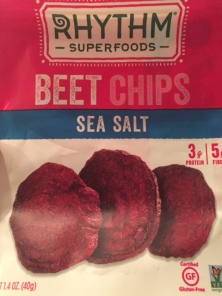 Snack Co.” that makes great green bean chips, but these are available from different vendors all over.
Snack Co.” that makes great green bean chips, but these are available from different vendors all over. - Beef jerky: There is one company that I’ve found that doesn’t include all of the nonsense that most other beef jerky suppliers do, and that is “The New Primal” based in Charleston, South Carolina. They supply to many grocery stores and are also available online.
- “That’s It.” blueberry probiotic bars: These bars are great in that they only contain blueberries and bacillus coagulans cultures. This brand also has a blueberry and apple bar that is acceptable as well. These can be found on Amazon or other online retailers like Vitacost.
You can also use a food dehydrator to dry out basically any vegetable to make a crispy chip/snack, or use your oven to bake them.
Also, it’s been helpful to broaden my horizons of what I consider breakfast, lunch, and dinner foods. As you can probably tell, a lot of what are traditionally eaten during these times of day are off limits, so I eat “dinner” foods for breakfast almost every day. Being that eggs are an excellent source of zinc and protein, I do eat them for breakfast often , and try to keep at least a dozen hard boiled eggs in the refrigerator for snacking. I stick to mainly organic/vegetarian fed chicken eggs, however I recently tried duck eggs (hesitantly I must admit) and they were fantastic! In the deviled egg recipe that is pictured below, I used a spicy mustard variety that only includes horseradish, apple cider vinegar, and mustard seed and mixed that with the egg yolk. It is a bold, very tasty snack indeed.
- Now that I’m eating a little more raw, a great and super easy snack is sliced cucumbers with sea salt and cracked black pepper – very refreshing! Cucumbers are part of the dirty dozen, so on the seldom occasion I can’t find them organic, I just make sure to peel them before eating.
FATS: fats are our friend! There is common misconception that fat is bad and catalyzes weight gain and raises cholesterol. Fat can perpetuate weight gain if you are experiencing gallbladder/bile flow dysfunction, in which case the digestion of fats is the problem, not the fat itself (the fat gain being associated with the malabsorption of fat soluble vitamins A, D, E, and K and essential fatty acids).
Fats are essential for a wide variety of imperative physiological processes and I stress the inclusion of them in my diet for sure. I avoid all trans fats, but load up on “good” fats such as organic, cold-pressed, unrefined coconut oil, organic extra-virgin olive oil, organic butter or ghee, and the occasional almond butter condiment. Yes, nuts are very high in copper, yet I strictly avoided all high copper foods for about 2 years and gradually started including almond butter occasionally again. It’s one of my favorite things, and its super important to include a couple favorites to keep your enjoyment of eating alive!
ORGANIC EATING: I have switched to mostly organic foods. It is a slight myth that eating all organic is much more expensive than not. In most grocery store chains currently, there is a “house” brand organic line that is more cost-effective, I just scope it out and stick to that line. In general, yes, organic eating is more expensive than not – however the benefits make the extra costs well worth it. Check out the produce section as well, as there is often a whole separate organic portion where most of the “good” produce will be found.
- If a food label states “USDA Organic” or “Certified Organic” this means that it does not contain nor has it been feed GMO containing ingredients. It is also free of synthetic fertilizers, pesticides, antibiotics, and added hormones. In other words, it is clean and most preferred.
- Is organic eating absolutely obligatory to healing? It is preferred. Basically, eating a whole food diet is the top priority, and if it is mostly organic, even better. But sometimes various circumstances can interfere such as cost, or being out at a restaurant when you can’t prove the food is truly organic or not. This is why a “most of the time” policy is really the only realistic expectation.
ENJOYING FOOD!: it is so key to enjoy what you are eating…as we will steer away from our protocol very easily if we feel we are being “starved” of our favorite things. As I mentioned previously, Copper Toxic individuals often gravitate toward high copper foods, yet as my levels have balanced, I no longer crave them or are concerned with them really. I’ve developed a love for cooking and truly enjoy the real and simple taste of whole foods. In the seldom occasion that I “cheat” I really pay for it in the way I feel, so doing so is definitely not a priority of mine. Food is a beautiful, expansive medium to improve and maintain our health, and it is meant to be enjoyed. Getting creative has been my main help, as I continue to develop new ways of incorporating more healing foods and making what I 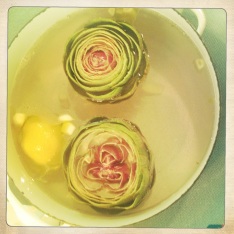 eat absolutely delicious.
eat absolutely delicious.
Using spices, organic butter, organic olive oil, organic cold pressed coconut oil, and other super delicious ingredients to add more flavor keeps mainly vegetable and protein containing meals very tasty. At some point in my life, I look forward to having a garden of my own, although I have yet to develop my “green thumb” as of now, so that will be later down the line. It’s easy to grow your own herbs though, which I plan to do soon! Experiencing the long-awaited improvement in my overall health and achieving the balancing of my copper levels has been so tremendously refreshing, and makes all of this totally worth while.
TYPICAL DAY
*I usually do not eat breakfast until about 45 minutes to an hour after I wake up, as many of the supplements that I take are meant to be taken on an empty stomach – adhering to the “with meals” or “on an empty stomach” suggestions can get a little tedious, and I’ve found that I do best when I figure out which ones I absolutely have to take on an empty stomach to ensure their efficacy and take the rest throughout the day…it’s a little unrealistic otherwise, and once again it just comes down to what works best for you and your schedule. Our blood sugar is the lowest in the morning, so it is important to eat relatively soon after you wake up.*
Breakfast:
Vegetable Omelet – I often heat coconut oil or butter in the pan for a few seconds prior to adding my eggs, it has excellent flavor and really enhances the rich flavor of the eggs
- Ingredients: chopped zucchini, yellow squash, asparagus, fresh basil leaves, fresh cracked black pepper, fresh cracked sea salt (sautéed first before adding whipped eggs) I also add dried basil to eggs often – it really is a complimentary herb in a lot of dishes!
Tea – Usually ginger, parsley, chaste tree, dandelion, or nettle tea with ground ginger and a tiny slash of carrot juice. The carrot juice may sound strange, but it gives the tea a wonderful consistency and slightly sweet taste. Sometimes I add lemon. 
Fresh Juice – as mentioned above, which usually includes fresh greens (spring mix, fresh basil leaves, etc…I don’t juice with collard greens because I tried that once and really didn’t like the texture), lemon, fresh ginger root, cucumber, celery, beets, carrots, chlorella, and sometimes blueberries/strawberries
- I’ve found the consistency to be more appealing if I add about a cup of spring water to the Nutri Ninja prior to liquifying the ingredients (or some organic no-sugar-added apple juice when doing liver/gallbladder flushes). Also, sometimes I will strain the juice if I want a lighter texture, in which case, I put a small strainer on top of a large glass and pour the contents of the Nutri Ninja container into it, pressing down with a large spoon to make sure all of the juice is excreted. Of course I don’t do that all of the time, because the insoluble fiber (the pulp of all the ingredients) is excellent to maintain optimal intestinal motility. Other times, I’ll use a juicer that excretes all of the pulp leaving just the juice.
Mid Morning Snack:
Boiled carrots and beets with sea salt and black pepper and a blueberry probiotic bar
- Again, these are super effective for enhancing bile flow and hence optimizing liver and gallbladder function. I’ve really noticed a difference in my overall digestive health since increasing their presence in my diet. I make huge batches of both and keep them refrigerated for easy snacking or to add as a side to my meals.
- To make my beets, I simply chop the tops off (and cook them as well if they aren’t wilted) and add all of the beets to a large pot with spring water and boil (covered, on medium to medium high heat). This can take a while, usually around 45 minutes (hence my learning to cover them to expedite the cooking time), for them to reach a tender consistency. I then strain them (just by moving the pot’s lid a little off center and keeping them in the pot) and add cold water so that I can handle them comfortably and peel the skin off with my hands, which comes off super easily. I then put them in a large glass storage container, cut them into bite sized pieces, and add fresh ground black pepper and sea salt. Since I don’t eat hardly anything containing sugar, beets are really like candy for me! They have such a nice, earthy taste and very pleasant texture and go well with nearly everything I eat on this diet.
- I also often make a sort of “carrot stew” by adding 4 bags of baby tri colored carrots, spices, sea salt, and organic vegetable broth, simmered and stirring every 10 or so minutes for a total of about 35 minutes.
Lunch:
Herb Chicken with pan seared green beans and roasted butternut squash – I have always been a “sauce” person, and like to dip my food in sauces, yet seeing as most traditional sauces have been eliminated from my diet, I usually will add a side of my ACV salad dressing recipe, or the new roasted red pepper dressing that I found to amp up the flavor of the protein and vegetables that are included in my meal. I’ve also tried my hand at making fresh pesto, it came out great as well.
- When I will be eating lunch away from home, I pack my cooler with it in the morning and bring it with me. It is important to stick to the no-plastic rule here, as plastics (especially when housing hot or warm foods) can cause xenoestrogens to leak into your food. “Pyrex” is great to use, it is a glass container with a plastic top. You can also fill zip lock bags with ice and use them in your cooler if you don’t have traditional cool packs, just be careful, because the condensation can create a mess fairly easily as I’ve discovered :).
Mid Afternoon Snack:
Hard Boiled Eggs & Ground Beef Sage Bites or beef jerky – as described above in my “SNACKING” section
- Protein, Protein, Protein! As you can tell, there is a ton of protein incorporated within this protocol. This can sometimes be hard on the kidneys (which is often the second place copper heads to following the overloading of the liver when levels increase), so I’ve found a great kidney homeopathic remedy that I use from time to time to give them some love :). As with all aspects of life, it is all about balance, so protein intake is encouraged, yet kept to a moderate amount. I always take periodic breaks for a day or two from all meat and eggs.
- It is also relevant to note here, that often, people with a copper imbalance will have an initial aversion to eating red meat. I sure did to begin with. This is because as your zinc levels drop due to increasing copper levels, your digestive enzymes decrease as well (zinc is elemental in the production of digestive enzymes), and your body inherently senses that eating red meat will be difficult due to reduced digestive enzymes.
I usually avoided red meat and ate chicken or fish because it was more easily digestible. Soon after the implementation of my balancing protocol, however, I really came to enjoy beef, and have been able to digest it just fine. This is also improving consistently with the improvement of my gallbladder function. Beef is one of the most bioavailable forms of zinc, so on this particular protocol I’ve found it to be absolutely elemental. It is also an excellent source of Vitamin B12 and iron, among other important nutrients. You can also make burgers, just not with the bun…and beef, in my opinion, really goes well with most anything.
Dinner:
Oven Baked Herb Salmon, Rutabaga Mash, Collard Greens, and a fresh Green Salad
- Salmon Ingredients: wild caught Alaskan salmon, fresh squeezed lemon juice, butter, dill weed, fresh ground black
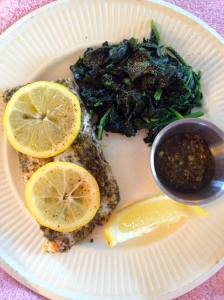 pepper, and sea salt (baked in the oven at 350 for 20-25 minutes, coating the salmon with the additional ingredients prior to baking). I used to bake my fish in aluminum foil yet have since switched to a traditional baking pan, as the aluminum can seep into your food, especially when heated. Also, I coat the bottom of the baking pan with coconut oil and it works great as a non-stick agent.
pepper, and sea salt (baked in the oven at 350 for 20-25 minutes, coating the salmon with the additional ingredients prior to baking). I used to bake my fish in aluminum foil yet have since switched to a traditional baking pan, as the aluminum can seep into your food, especially when heated. Also, I coat the bottom of the baking pan with coconut oil and it works great as a non-stick agent. - Rutabaga Mash Ingredients: 1/2 rutabaga, butter, dried basil, ground sage, tarragon, coconut oil. I usually make large batches of this, with 2 to 3 large rutabagas, chopping them into cubes (after peeling them…the outside can have a wax coating on it so make sure your peeler is heavy-duty…also, they can be VERY difficult to chop, so be extra careful when doing this, as I have to use a huge knife to get the job done), boiling them (it can take a while for them to soften so be mindful of that), and mashing them together with all of the aforementioned ingredients…such a tasty dish, a comfort food of sorts. Here is a more specific recipe for this dish.
- Collard Green Ingredients (per my large batch): 3 large bushels of collard greens washed (with Grapefruit Seed Extract, as described above) and chopped, tons of cumin, fresh ground black pepper, sea salt, dried cilantro, and coconut oil. The bushels of greens will appear to be huge, leading
 you to believe that you could feed a small army if you cook 3 whole bushels, however, this is very misleading because they cook down considerably. I initially have to sort of stuff them in the pot, but once I add the water and cover the pot for a bit the density decreases by well over half.
you to believe that you could feed a small army if you cook 3 whole bushels, however, this is very misleading because they cook down considerably. I initially have to sort of stuff them in the pot, but once I add the water and cover the pot for a bit the density decreases by well over half.
I put coconut oil in the bottom of a large pot, add the chopped collard greens and said herbs with about a cup of water, cover, and let simmer for 20-30 minutes, stirring occasionally. You may need to add more water as some evaporates, but I add as little as possible to begin with, as I don’t like it to have a soupy consistency. If that is what you are going for, however, more water will work. If you prefer your greens to be more tender, you can simmer for longer, I’ve let them simmer for up to an hour and they are delicious either way. I also discovered that cumin is a very complimentary flavor to collard greens, so I am very liberal with the amount that I add. Also, as described below, organic free-range chicken broth is very tasty with collard greens and a lot of other vegetables.
- Salad Ingredients: Organic “spring mix” with boiled beets, fresh ground black pepper, sea salt and one of the two salad dressings mentioned above (or both, as mixing them is super delicious!)
MISCELLANEOUS POINTS:
*I try not to each fruit with protein, as this can encourage poor digestion. Fruit is usually eaten by itself, or with vegetables and/or in a juice.
*I make tons of vegetable sautés with a variety of allowed vegetables, which mainly entails coconut oil/olive oil, vegetables, herbs & spices, black pepper, and sea salt. A tasty new addition to my sautés is adding a bit of organic free-range chicken or vegetable broth which really enhances the flavor. Of course, you can make a soup of sorts with this method, yet I tend to just add in small portions of broth and allow the vegetables to absorb it, making it more like a chili. Speaking of chili, you can add any kind of allowed meat to your vegetable sautés, and some tomatoes, to make a delicious chili. I usually use ground 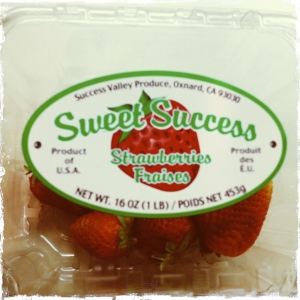 turkey or beef. Here is a great copper-friendly chili recipe that I make often, listed at the top of my “Recipe” page.
turkey or beef. Here is a great copper-friendly chili recipe that I make often, listed at the top of my “Recipe” page.
*I try to eat dinner around 6pm and do not eat for at least 2 to 3 hours before going to bed, in order to give the food time to digest before being immobile while sleeping. This has really helped with abdominal bloating and overall digestive function. This is also helpful for catalyzing biochemical and cellular energy production, which is dramatically decreased with CT (as anyone experiencing this malady will assure you of!) I also try to “do something” following dinner, like household chores or going on a short walk, which keeps me moving for a bit in order to speed digestion.
*Sometimes, I will drink about a tablespoon of Apple Cider Vinegar in water before each meal to increase stomach acid production and enhance digestion…it works great for me. I do this on and off because ACV is rather high in histamine.
*Also, I am consistently drinking water throughout the entire day, in my Hydro-Flask bottle (described and pictured above). I ordered the largest one they had on rei.com, so that I don’t have to be refilling it over and over. For the most part, it isn’t conducive to adequate digestion to drink a lot of water right before eating or right after eating, so I just sip it during my meals and save the large consumption of it for in-between meals and snacks. Adding lemon is helpful to enhance the flavor, however I’ve always loved the simplicity and refreshing nature of clean, pure water.
*As is demonstrated in the above example, it is very important to include a protein source with about 2 of your main meals in that it is the most bioavailable form of zinc, the active retinol form of Vitamin A (needed to make ceruloplasmin), and provides vital components to enhance overall immune health and tissue repair.
*If possible, I try to remain seated and/or still for about 5-10 minutes after eating, which has proven to improve my digestion considerably. If I’m not eating with other people, I will typically read for that time period which is enjoyable in and of itself :).
*I also try to eat every 2 to 3 hours, as is shown in this example. This has helped me maintain blood glucose levels, which can really become adversely effected with Copper Toxicity. Before embarking on this protocol years ago, I would usually only eat one or two main meals a day…I simply wasn’t hungry until the afternoon. This is a sign that there is an underlying imbalance going on, and soon after beginning the protocol my appetite surely increased. 
There are some sources that advocate for intermittent fasting, which is essentially skipping one or two meals a day. I personally don’t like doing this, as when I’ve tried it I get really hungry really fast, and I don’t believe having regular blood sugar drops is very conducive to maintaining my physiological balance. Do what’s best for you though, as many have found this to work for them, just not me personally. As is stated above, I try to carry my cooler in my car with me and have a snack or meal packed in it most of the time, even if I’m not traveling out of town. Sometimes we can get “caught” running errands or staying at work for longer than anticipated, and seeing as there is little to no food items that I can eat at convenience stores or drive-thrus, I’ve found it helpful to just keep my prepared food with me. 🙂
*The photo above gives you an idea of what kind of coolers I am referring to. A medium sized cloth cooler works best for me, and the “cool paks” shown here last a while and work very well for keeping your food cold. I’ve found it best to put them at the top of my packed cooler, which keeps everything cold for the longest amount of time. As opposed to heat, cool temps tend to move down*
This is a strawberry butter recipe that I made and gave out as gifts :).
WEEKLY MEAL PLAN
Per a wonderful recent suggestion, I’ve decided to add a weekly meal plan section to give you a better idea of what this type of nutritional protocol looks like. Planning meals is very helpful in order to provide the most effective and easy grocery shopping experience, as well as allowing you to cook for your whole family as well as yourself in a more efficient manner. As my digestion and gut health have been greatly improved due to my now ideal copper levels I have recently been integrating more variety into my protocol, which will be somewhat reflected in this weekly plan.
Variety is huge for a nutritious, bioindividual meal plan, and as one continues to heal, the body will become more welcome to a much more wide range of various food items. For example, after a period of exclusion, reintroducing higher FODMAP vegetables such as cabbage, onions, garlic, and brussels sprouts is important, because these foods are superior for our health.
Monday
Breakfast: Omelet with ground turkey, chopped zucchini, yellow squash, and fresh basil leaves with tea
Snack: Handful of sea salt and cracked pepper macadamia nuts (as mentioned above, macadamia nuts are the lowest-copper content nut, so they can be eaten in moderation, especially once your levels drop considerably) and horseradish deviled eggs
Lunch: Steamed brussels sprouts, collard greens, boiled snow peas, and roasted diakon radishes
Snack: Boiled carrots and sliced cucumbers with fresh cracked black pepper and sea salt and a “That’s It.” blueberry probiotic bar
Dinner: Oven baked herb, butter, and lemon salmon (wild caught Alaskan), sauteed onions, butternut squash soup, and herb green beans with coconut oil, cracked black pepper, and sea salt
Tuesday
Breakfast: Vegetable sauté with organic free-range chicken broth, green beans, red onions, mustard greens, broccoli and various herbs/spices (I use a lot of oregano, sea salt, black pepper, cilantro, ground sage, turmeric, basil, and tarragon) with tea
Snack: Fresh-made juice (see recipe above as well as on my RECIPE page, 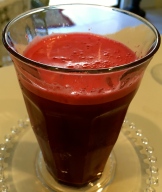 toward the bottom)
toward the bottom)
Lunch: Herb and olive oil marinated chicken breast over a bed of fresh organic arugula with a roasted red pepper dressing
Snack: Bowl of boiled beets with sea salt
Dinner: Copper-friendly chili with organic grass-fed ground beef – see my Recipes page for the specific preparation and ingredients.
***I also make this vegetarian style, for the days when I am taking breaks from animal protein***
Wednesday
Breakfast: 3 hard boiled eggs, fresh-made juice, and steamed carrots with vegetable broth and tea
Snack: Handful of organic sprouted pumpkin seeds and beef jerky
Lunch: Organic ground turkey burger steak with a fresh organic green salad, dressed with my homemade Apple Cider Vinegar dressing (see RECIPE page for specific ingredients)
Snack: Boiled artichokes with sea salt and a “That’s It.” blueberry probiotic bar
Dinner: Wild caught herb and butter baked salmon, rutabaga mash, steamed red cabbage, and caramelized onions
Thursday
Breakfast: Organic herb chicken sausage, baked zucchini, and fresh-made juice with tea
Snack: Sliced cucumbers with sea salt and cracked black pepper, and organic blueberries
Lunch: Sautéed green beans with butter and sea salt/black pepper, boiled tri-colored carrots with vegetable broth, steamed cauliflower, boiled snow peas, and sautéed beet top greens
Snack: Beet and green bean chips
Dinner: Filet mignon with cumin & coconut oil collard greens, steamed brussels sprouts, roasted butternut squash, and asparagus
Friday
Breakfast: Vegetable omelet with mustard greens, yellow and red onion, chopped zucchini topped served with a side of fresh salsa and cilantro with tea
Snack: Fresh-made juice and a blueberry probiotic bar. *Once a week I will include powdered chlorella in my juices to ensure adequate intestinal cleansing and the further elimination of heavy metals. If you don’t like the taste of chlorella, adding it to a juice is great because the fresh lemon, fresh ginger, and other various ingredients definitely mask the taste. Chlorella is high in sulfur so it is only consumed occasionally per my CBS gene variant and sulfur sensitivity.
Lunch: Baked herb chicken breast with roasted brussels sprouts and steamed broccoli
Snack: Bowl of boiled carrots and sliced boiled beets with sea salt
Dinner: Ground organic turkey or beef cooked with fresh basil leaves, ground turmeric, and chopped yellow squash/zucchini, with rutabaga mash and roasted daikon radishes
Remember that many of these dishes can be made without animal protein as to keep the balance and not include too much of a good thing.
Enjoy and thank you for reading!
You may also visit Healing Journey Essentials, where I share more information, insights, and tips on a wide variety of health and healing topics :).
*DISCLAIMER: I am not a medical professional. None of the information included in this blog is intended to serve as medical advice. All content is for informational purposes only. Please consult with your qualified healthcare professional for all medical advice and treatment protocols*
Copyright © 2015-2023 Flow Surge Healing

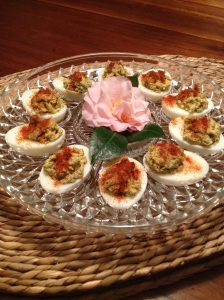


What would you recommend using that is safe to cook in? I use a cast iron skillet to cook eggs, veggies, and meat, but am unsure of the best pot to use for boiling and cooking in oven. Glass for oven? Stainless steel pot for stove?? Worried about dangerous metals/chemicals getting in my food.
LikeLike
Hello!
Yes, glass cookware for oven use is best, and stainless steel is best for boiling and other stovetop needs. Also, you will want to avoid storing things in plastic if possible, especially hot items, as plastics contain toxins and xenoestrogens that mimic estrogenic activity in the body, which is especially harmful for those whom are copper toxic. I use pyrex and love them. Using stainless steel and glass is best across the board, such as the “hydro flask” water bottle that I mention on this page, or simply using glasses to drink out of.
Thank you for your inquiry and I wish you all the very best in your healing!!
🙂 Megan
LikeLike
is the roasted red pepper dressing you use this?
https://jet.com/product/Annies-Homegrown-Roasted-Red-Pepper-Vinaigrette-8-Ounce/81279cca494f49b896a20b54ec16f781
I can’t find an organic version,. I am desperately trying to find more foods to eat and the selection where I live is awful so I’m trying to find things online.
LikeLike
Hello!
Yes, that is it! It is excellent that you are looking online for additional options, as there are definitely a copious array of products available to order. I hope for the time when every area will have access to a wide variety of organic foods, yet for now, the internet is a great resource (for pre-prepared foods, of course).
I commend your continued commitment to your healing!!
All the very best,
Megan
LikeLike
Hi Megan, Excellent article I learned a lot. How many calories do you eat on the day it seems very little? How many calories / grams in meat? I ask because I personally need around 2500 calories a day, most of my calories currently are from carbohydrates, is it possible to reach that amount of calories on your diet? Thanks in advance ..
LikeLike
Hi Eli,
Thank you for your comment! I am so glad that this page has been informative for you :).
Typically, on this eating plan, animal protein is eaten about 2 times per day. Each serving is about 3-5 ounces, which would be about 85-150 grams. Most of the calories in this eating plan are derived from fats – animal protein (meats, eggs, etc.), oils such as olive oil and coconut oil, butter, occasionally macadamia nuts and/or sprouted pumpkin seeds, and other various snack items described on this page that may be prepared with these oils.
All vegetables are usually prepared with olive oil, coconut oil, and/or butter. They can of course also be prepared using very little, if that is preferred or needed for the individual. Sometimes when just beginning a healing protocol, one may be experiencing exceptionally reduced digestive capacity, specifically reduced liver/gallbladder function, in which case fats would need to be limited for a period of time. The use of pancreatin and ox bile with meals greatly helps with the digestion and assimilation of fats.
Carbohydrates are limited, but if one can tolerate them and their gut health isn’t too imbalanced, organic brown rice and quinoa are perfectly acceptable gluten-free options for grains. Organic, non-GMO corn is also acceptable, however many people are sensitive to corn so that is important to remain aware of.
I have never counted calories, however it is certainly possible to reach 2500 per day on this type of eating plan if that is your specific requirement.
You are most welcome!
All of the very best and to your health,
Megan
LikeLike
Wonderful post. So very pleased to have found your page
LikeLike
Hi Jennifer! Thank you for your comment, I am so glad that you have found my page as well and I hope that it is of great help to you. I wish you all of the best on your healing journey :).
To your health,
Megan
LikeLike
This page is amazing! So much useful info, thank you!
LikeLike
Hi Victor! You are most welcome :). So happy it has been of help to you!
All the best to you,
Megan
LikeLike
Very informative page, thank you for charing!
What supplements do you count as the most important removing copper from the body?
What doses is good to start with in zinc, vitamine c, b6/p5p etc?
LikeLike
Hi Andreas,
Thank you for your comment and you are most welcome! 🙂
Everything that has to do with sculpting a copper balancing protocol, and any functional healing protocol is dependent upon one’s bioindividuality. Because of this, the answer to both of your questions would be “it depends”.
One of the most important first steps is to have a Hair Tissue Mineral Analysis performed, which allows one to see what their own unique mineral levels and ratios are, henceforth allowing for a custom tailored supplement protocol. There are other tests that can be helpful such as Comprehensive Stool Analysis w/ PCR x 3, some bloodwork, genetic testing, organic acids and urine amino acids, and other tests. In terms of mineral levels, HTMA is the most recommended to gauge current levels.
All doses for supplements will differ depending on one’s unique levels, but it is always best to start off at low doses for everything and use the “low and slow” rule of increasing doses very gradually over time if needed. Mobilizing copper from cellular and tissue storage must be done at a slow and gradual pace.
It is tough to say which supplements are the most important, because they all serve important purposes. Zinc is surly needed on most copper balancing protocols, and gut health supports are also huge, but again, every healing agent is equally important depending on the person’s individual needs. Furthermore, regarding mineral supplements – minerals behave in the body in relation to each other as opposed to independently, so formulating a supplement protocol must take this into account as well.
I am happy to let you know of a good HTMA practitioner is you wish.
I wish you all of the very best on your healing journey!
All the best always and to your health,
Megan
LikeLike
Hi, I have learned Alot . I am taking my copper IUD out do to copper toxicity, the last 3 month I have bine taking supplements to try and balance it, am tired of feeling crappy & fighting, so I’m taking it out to get My Health back. I try to eat 80% flour & sugar free. You had great tips for me thank you !!
LikeLike
Hi Mary,
Thank you for your comment! You are most welcome and I am so happy that this page has been helpful for you!
Yes, removing your copper IUD is a very important step to begin healing. I commend your efforts and dedication to regaining your health, the future is bright indeed.
Sending you peace and healing :).
All the best always and to your health,
Megan
LikeLike